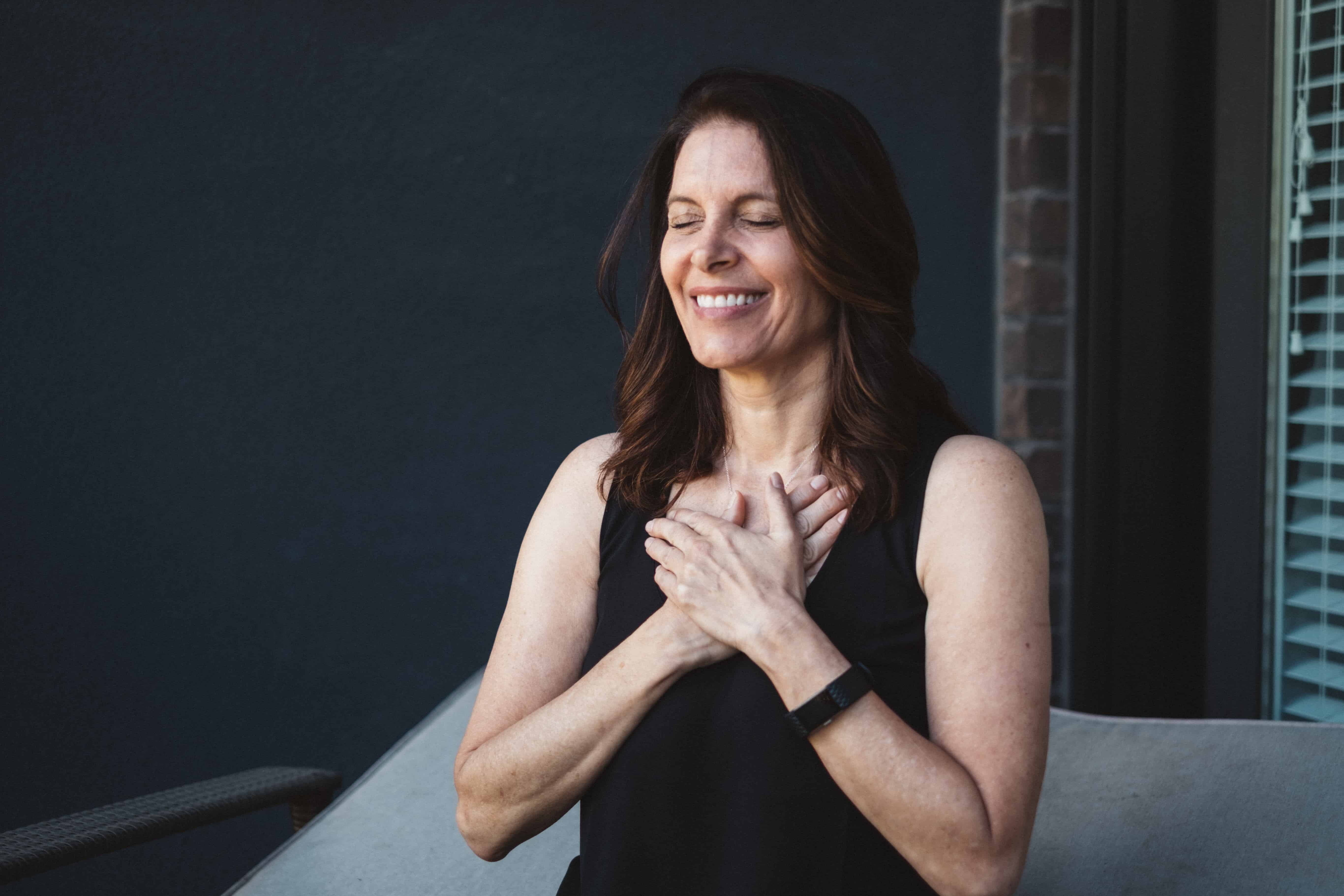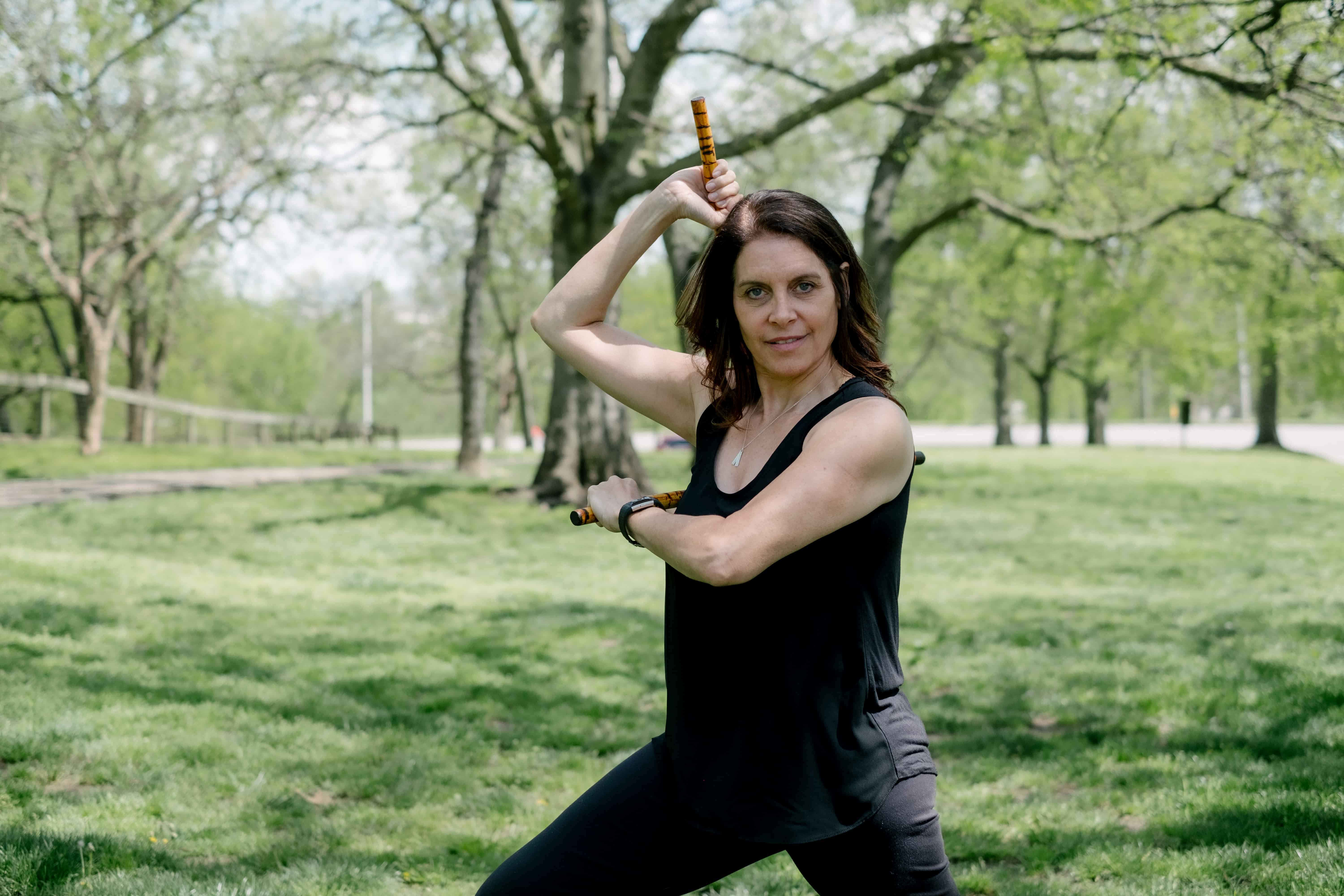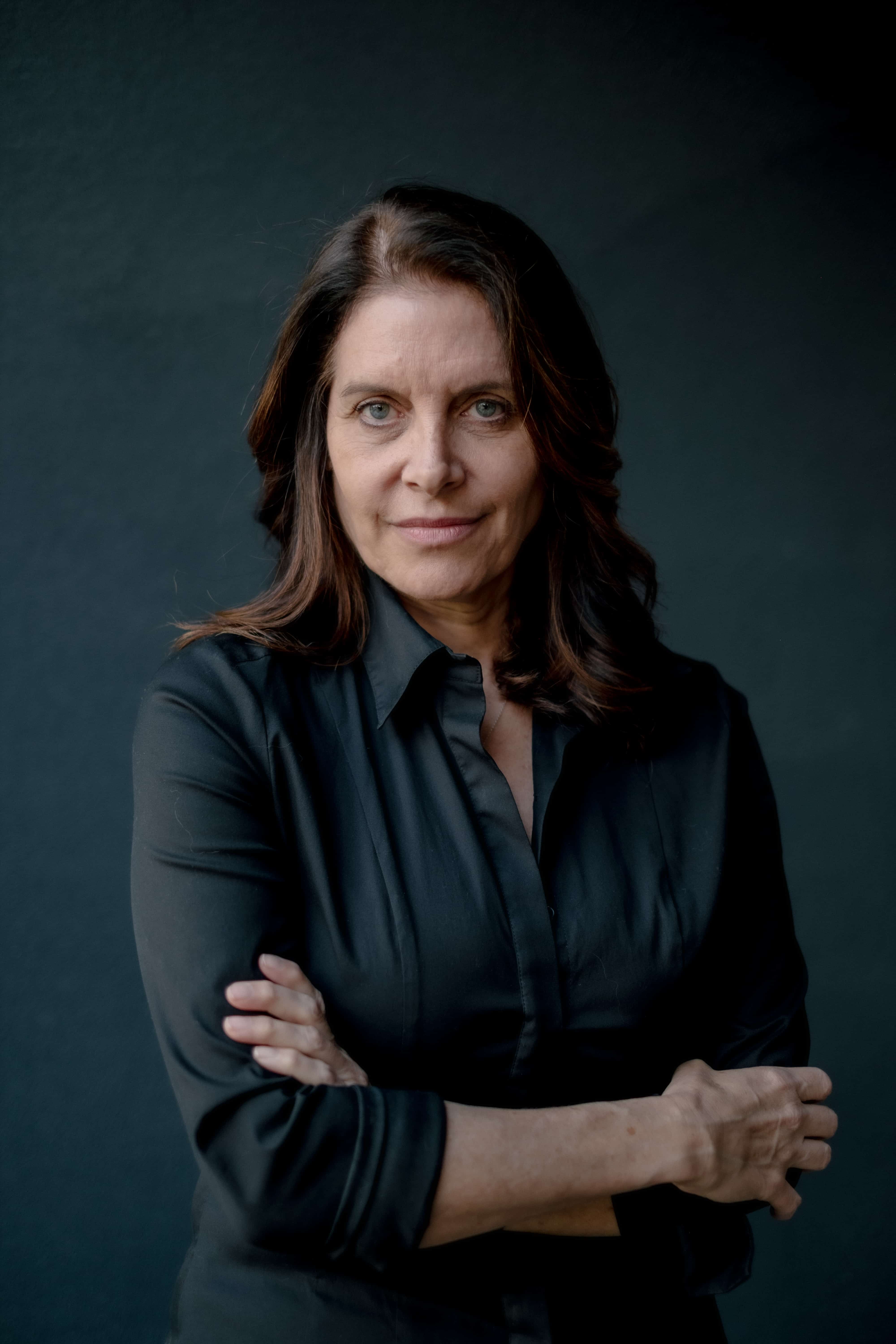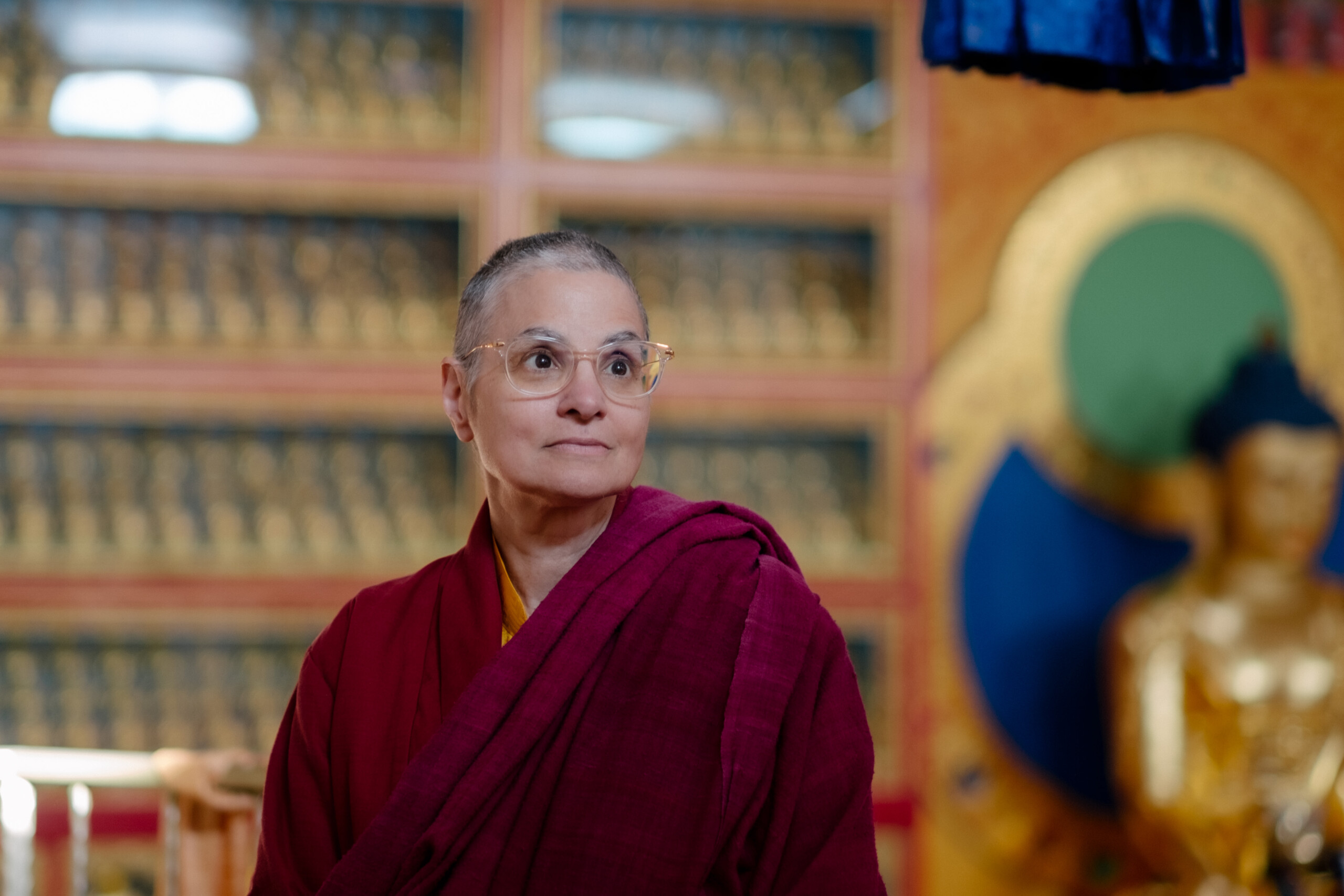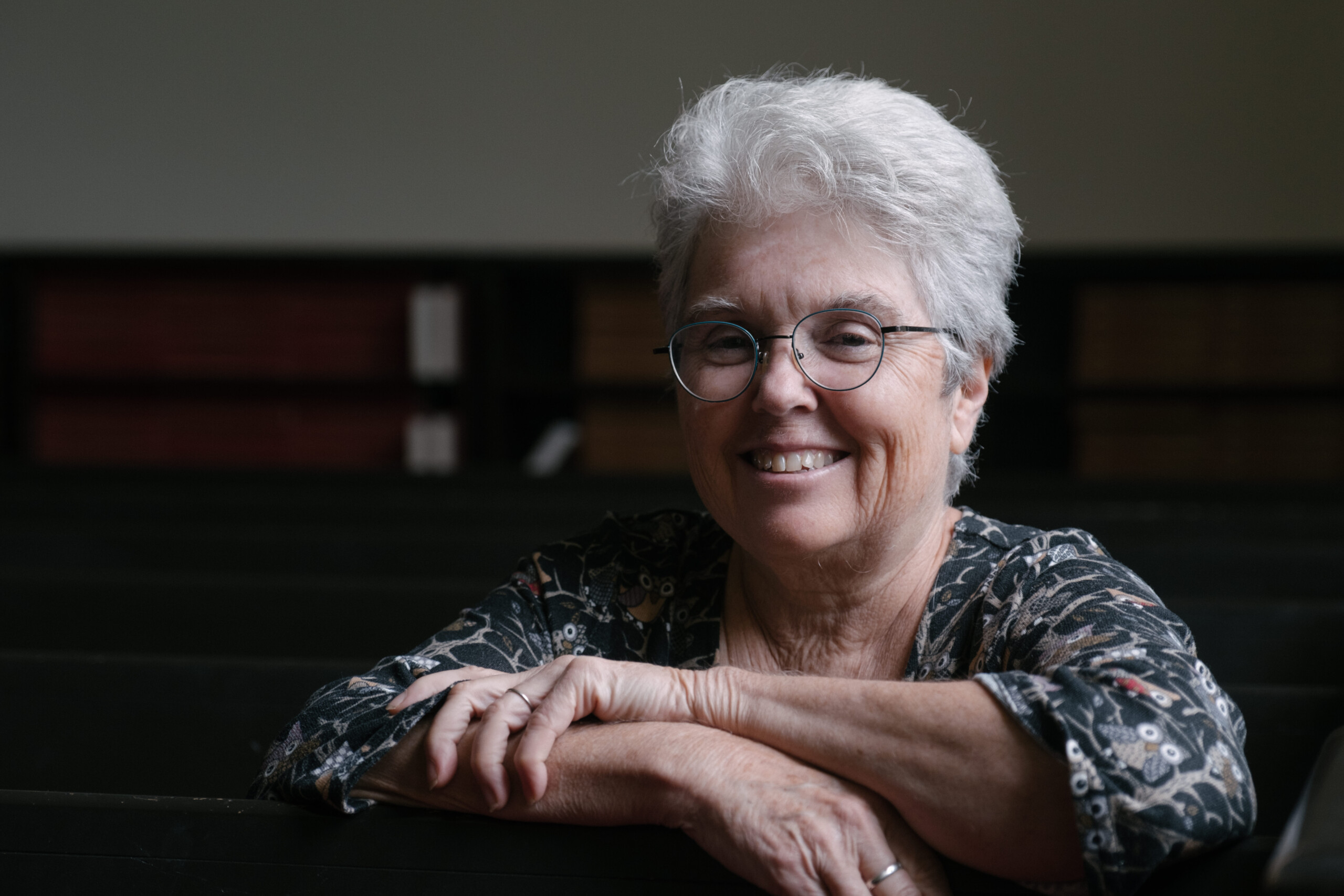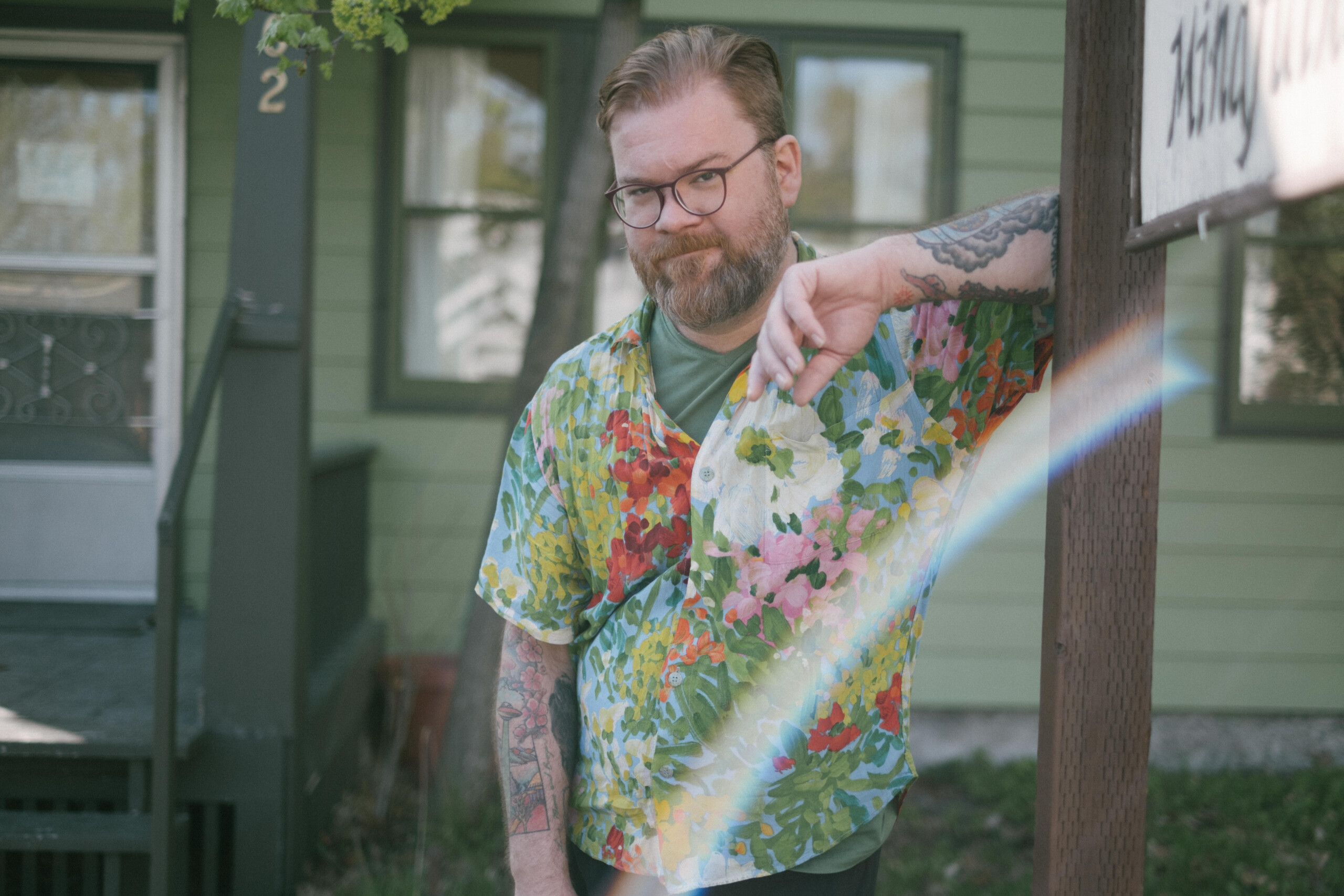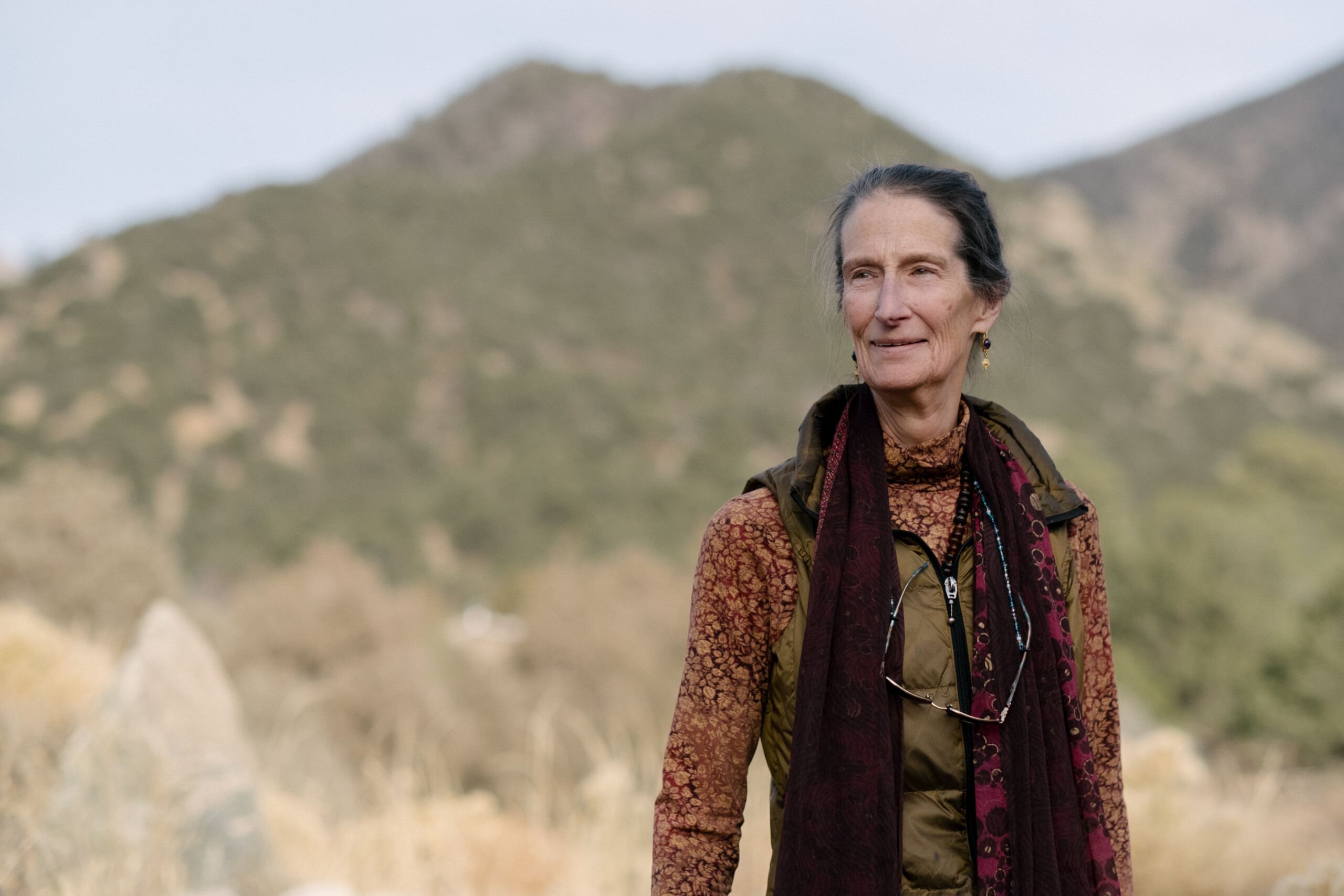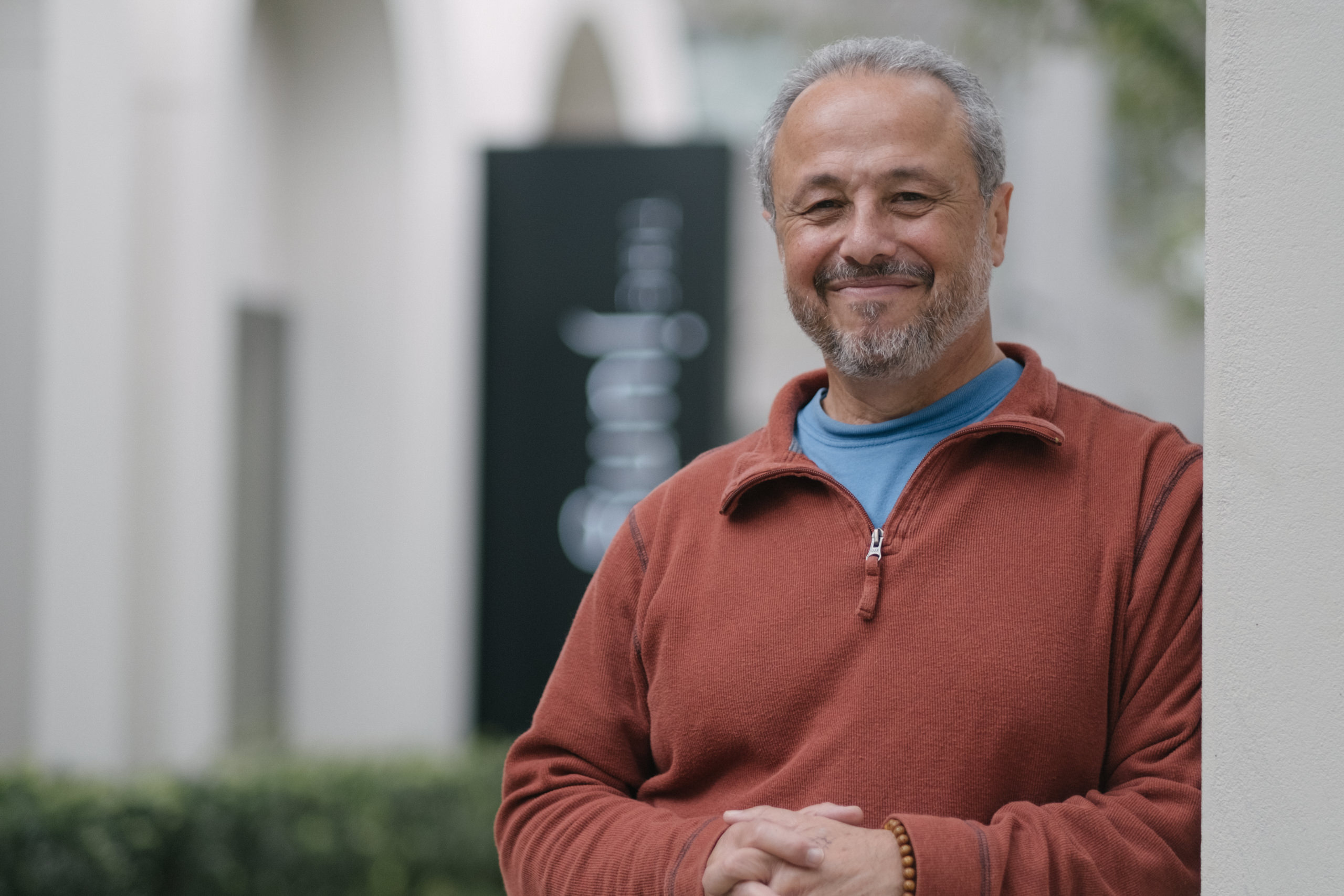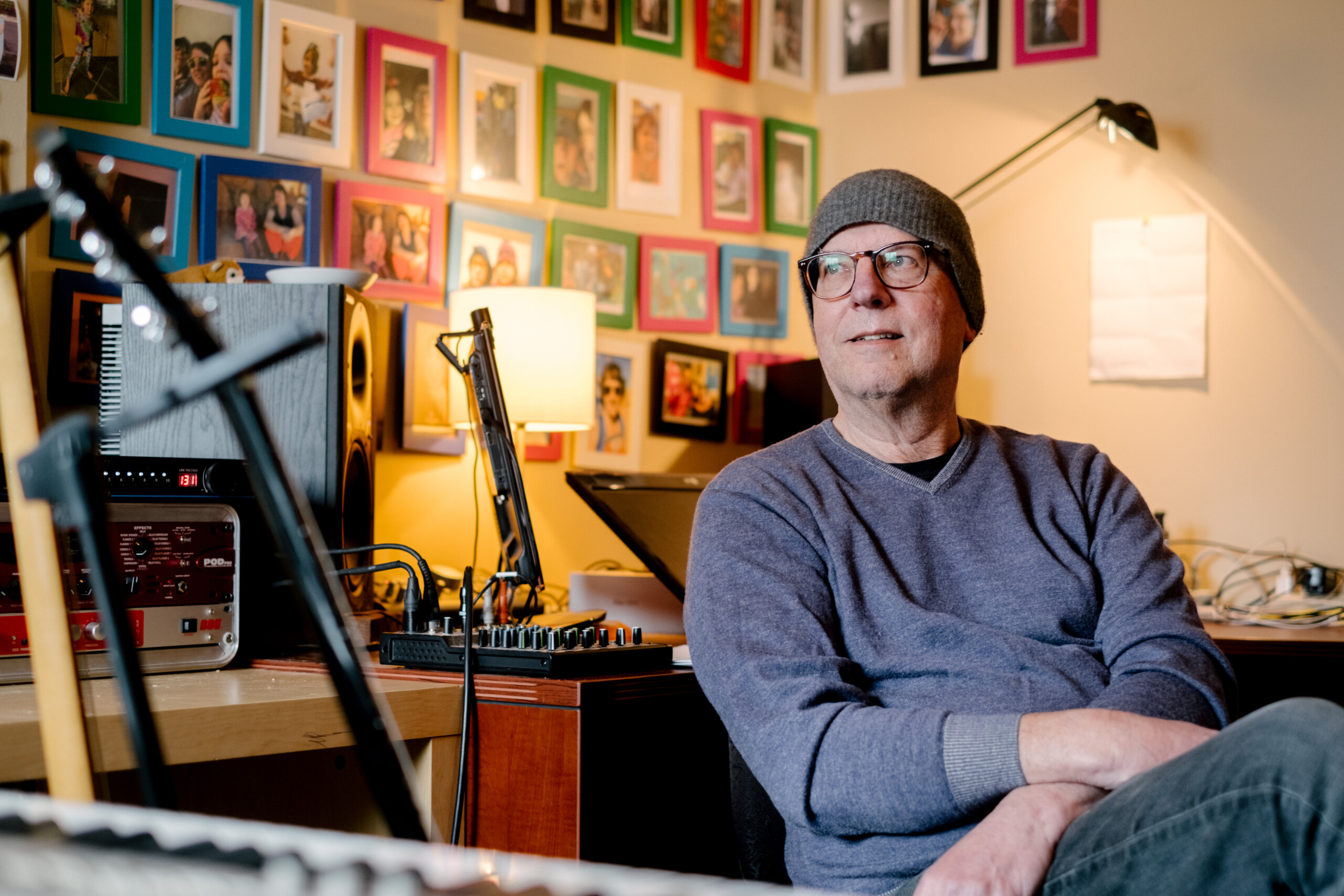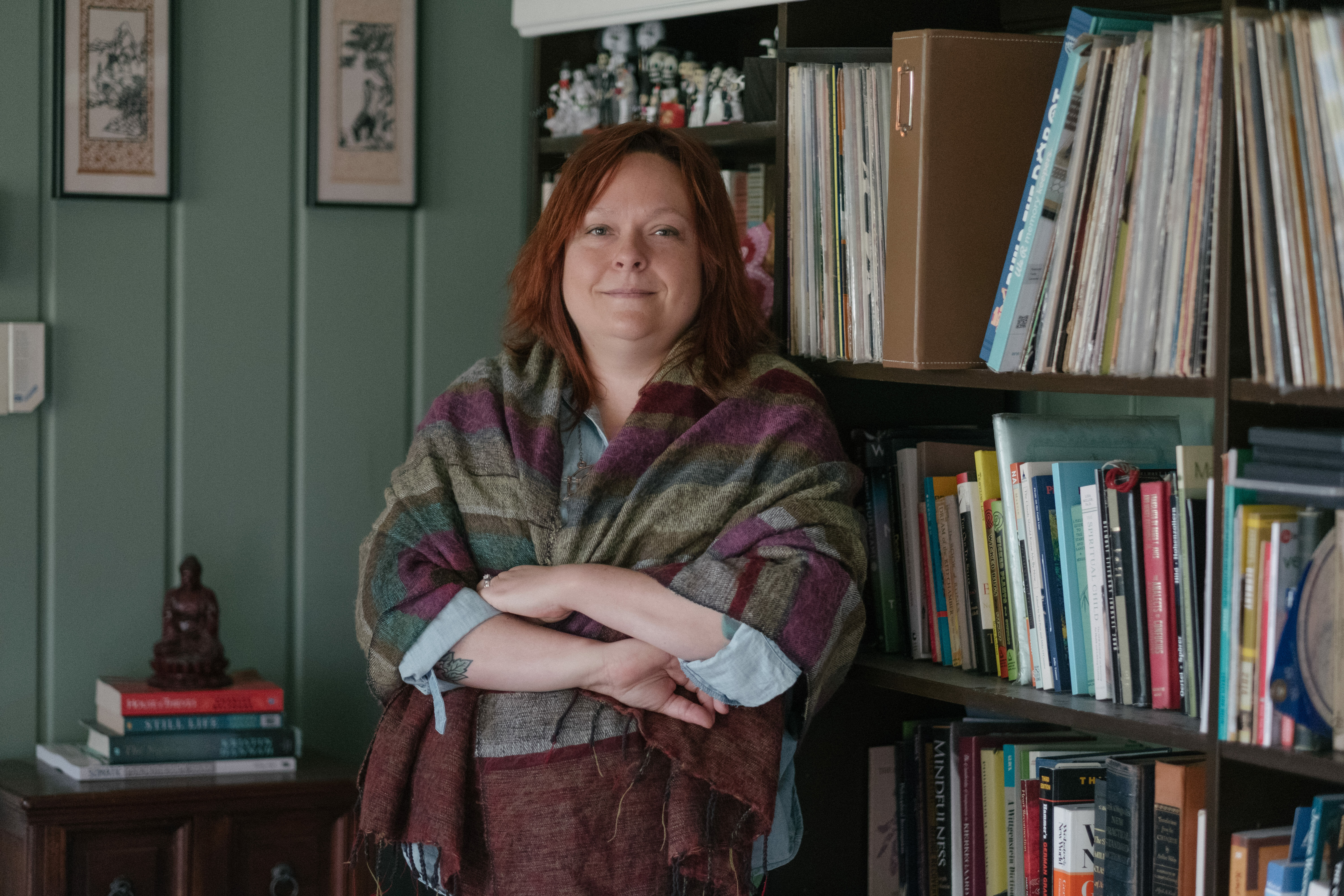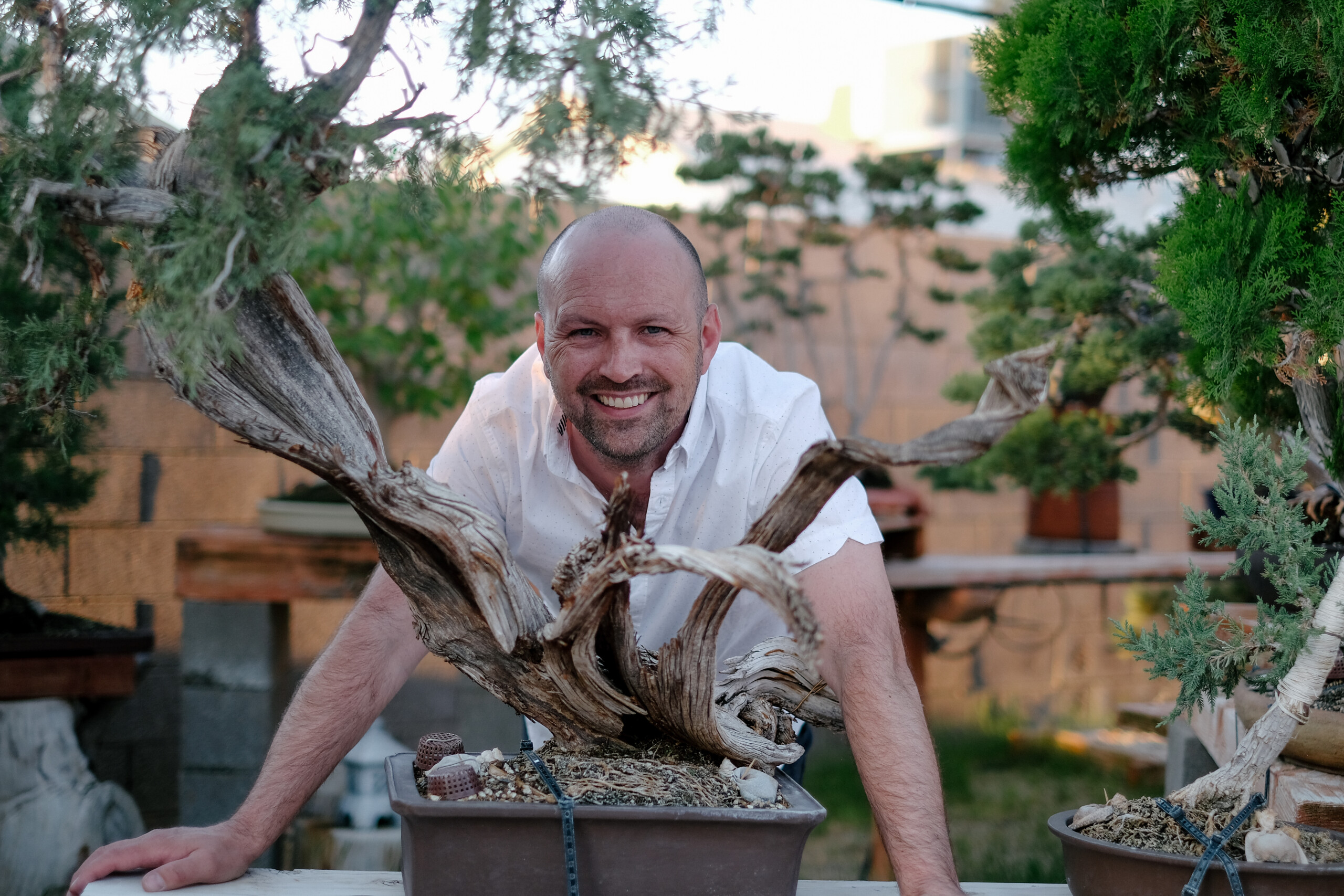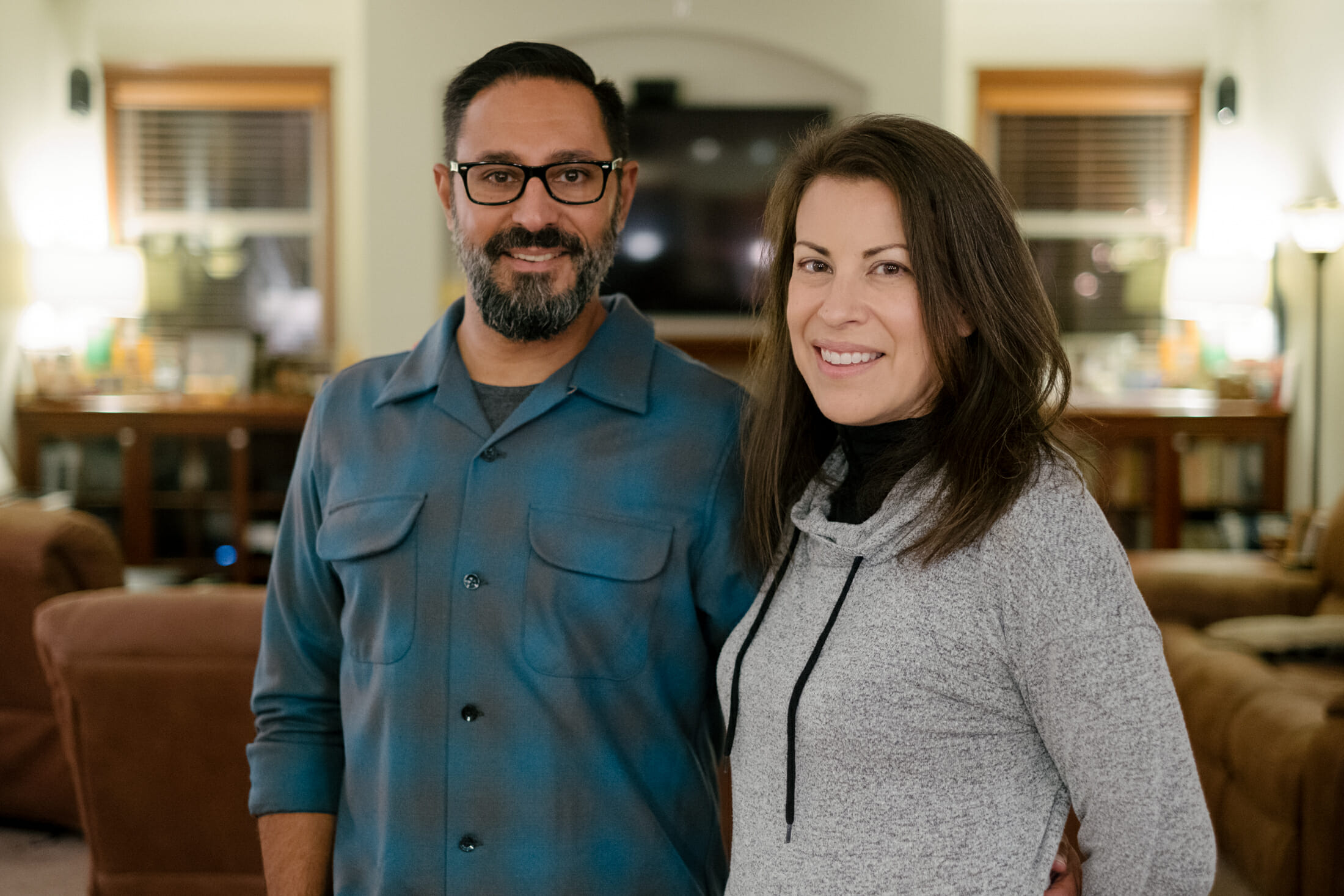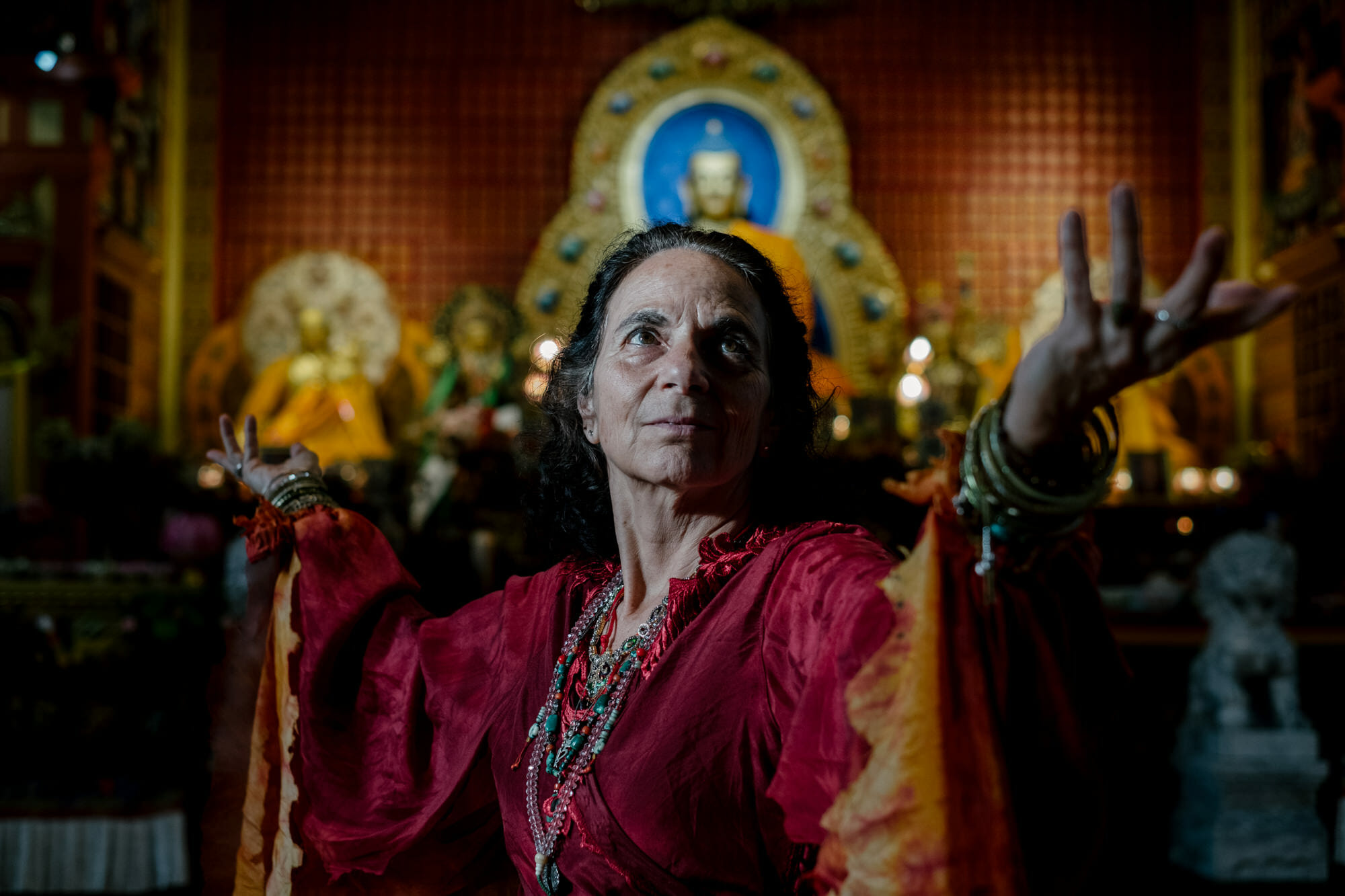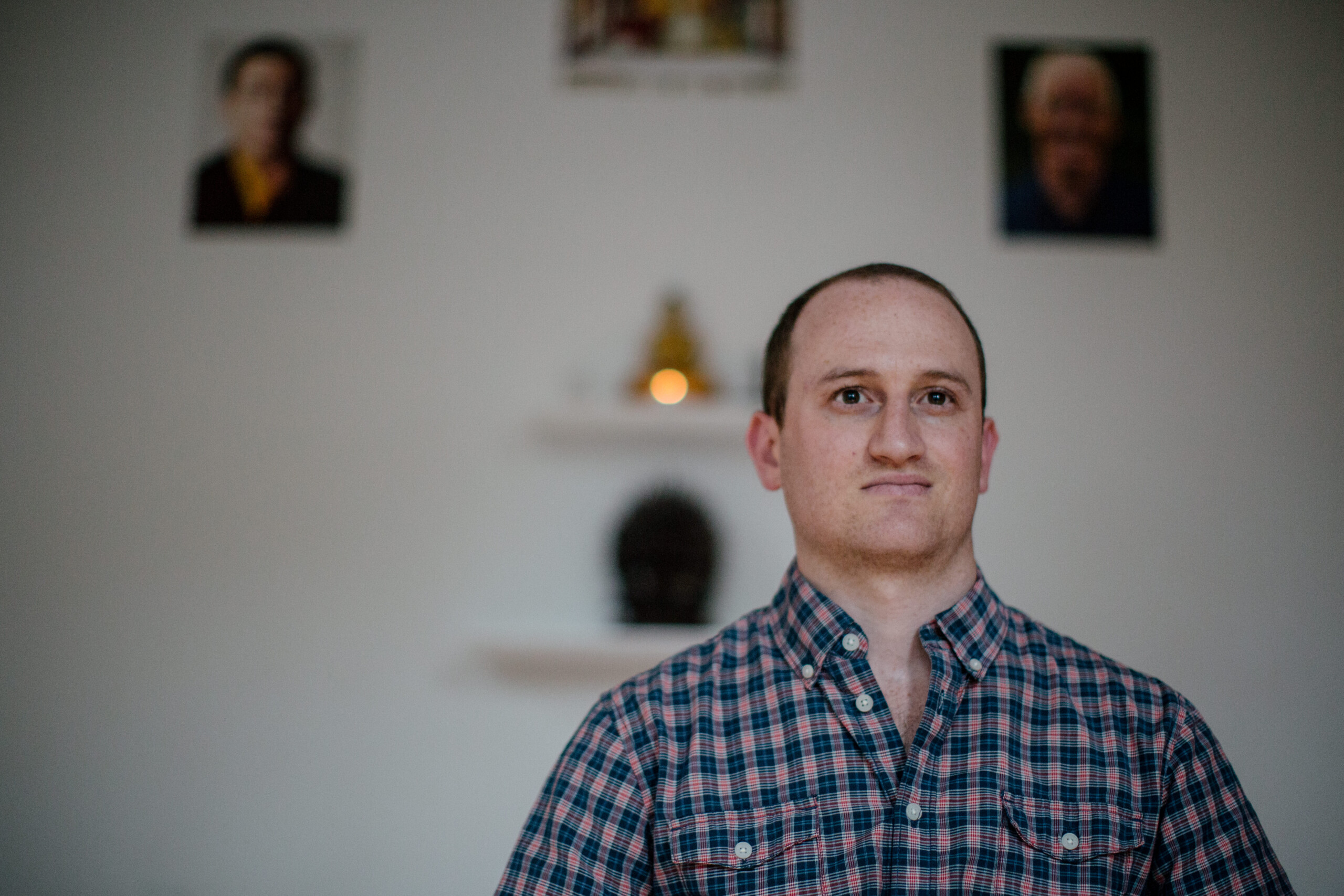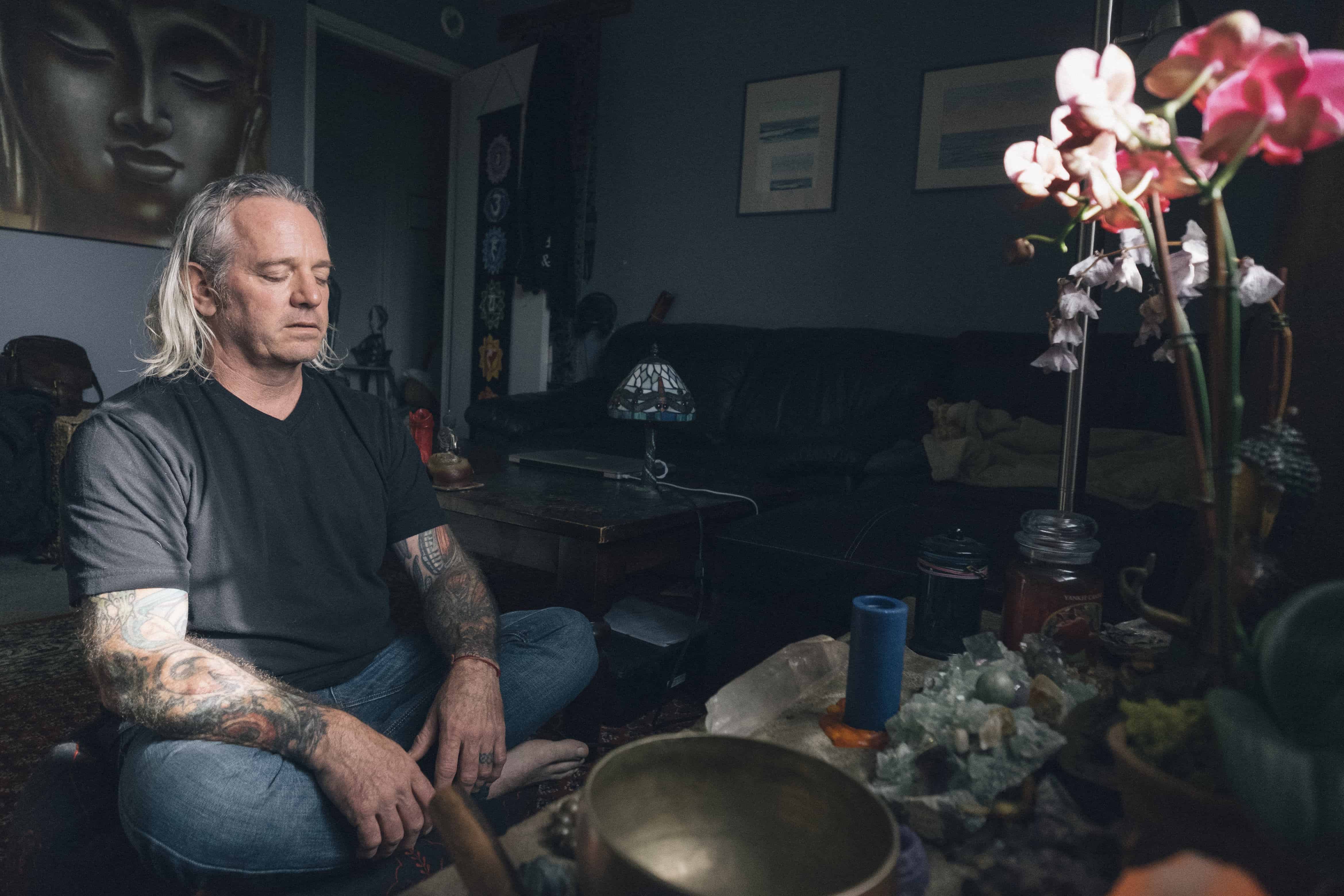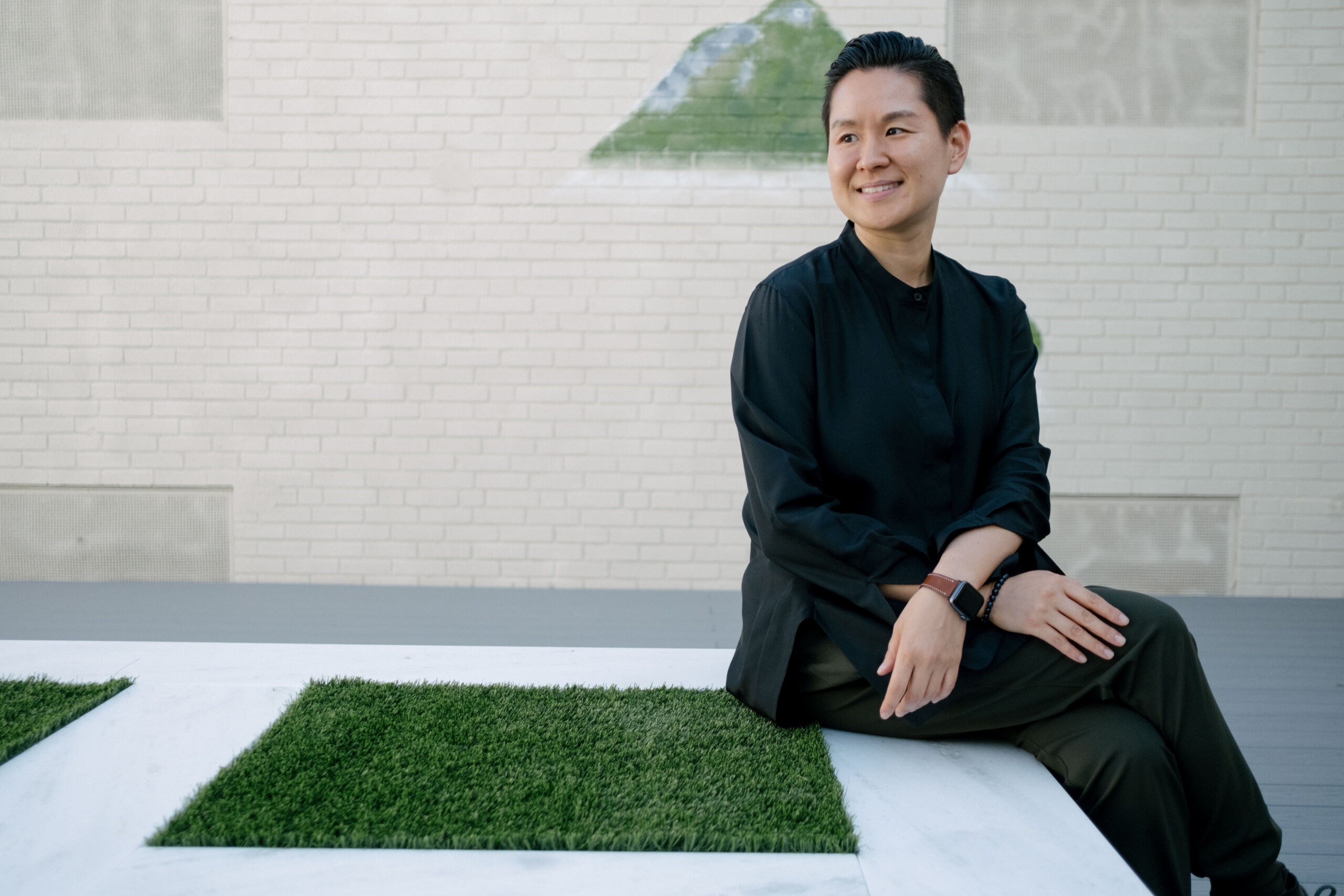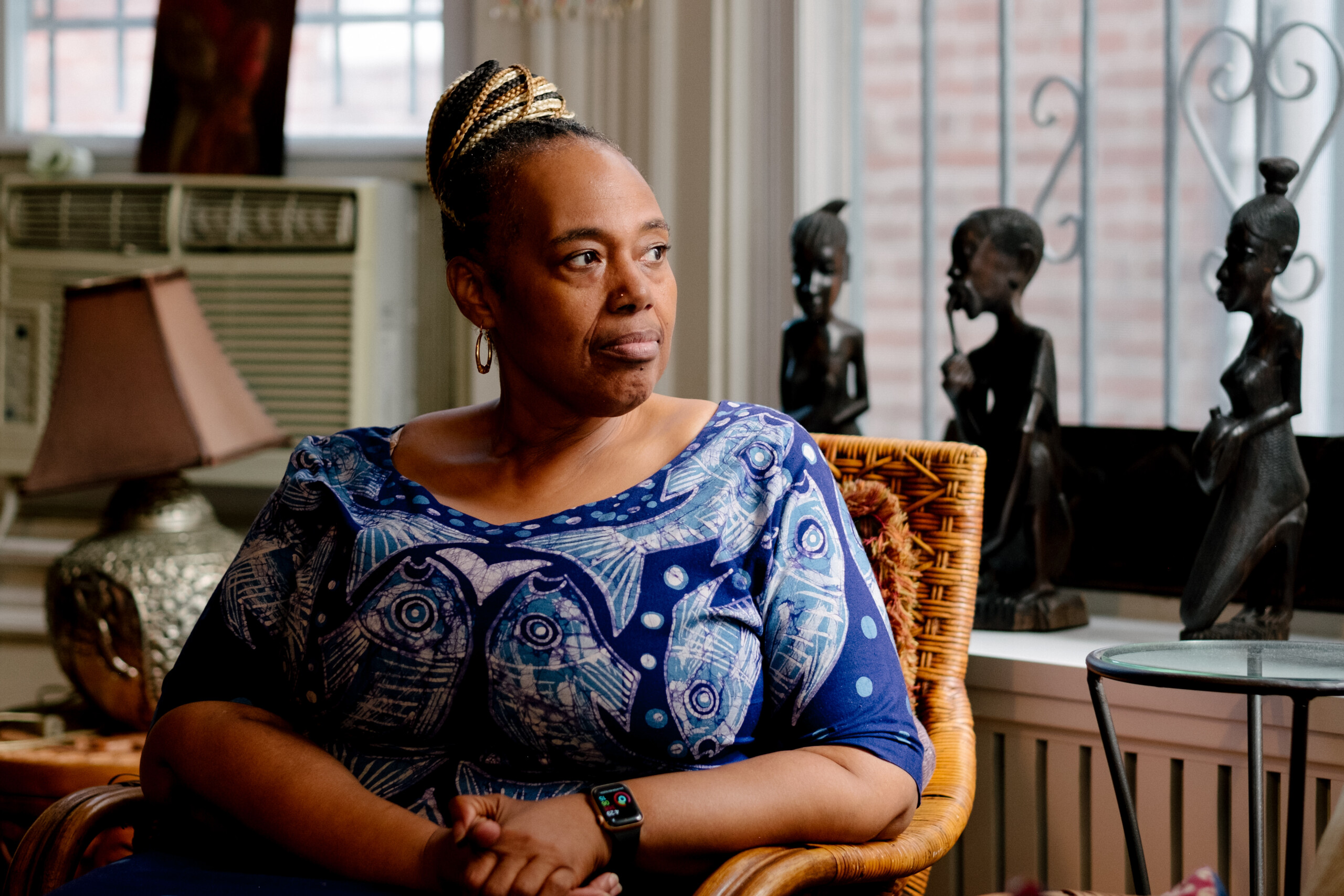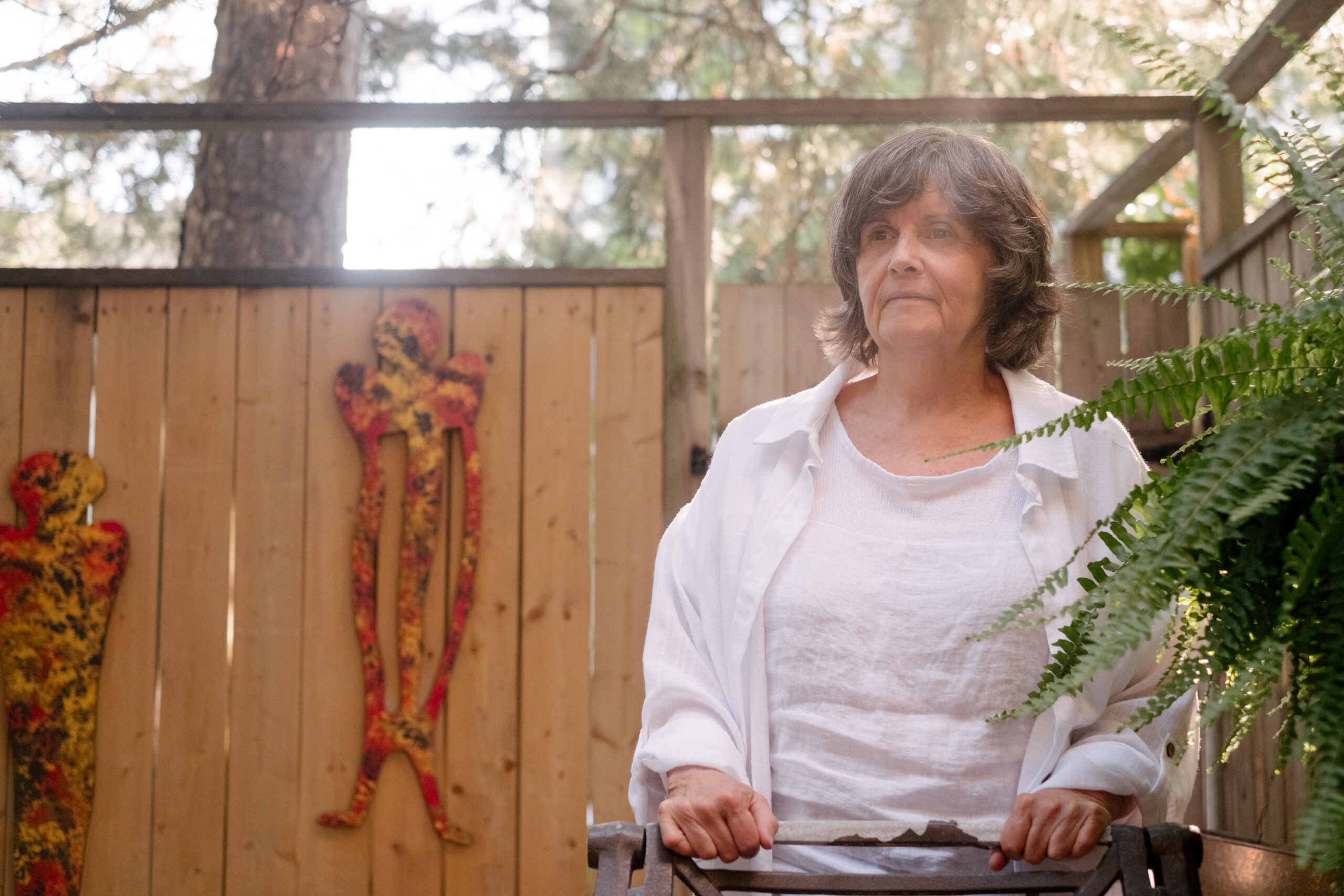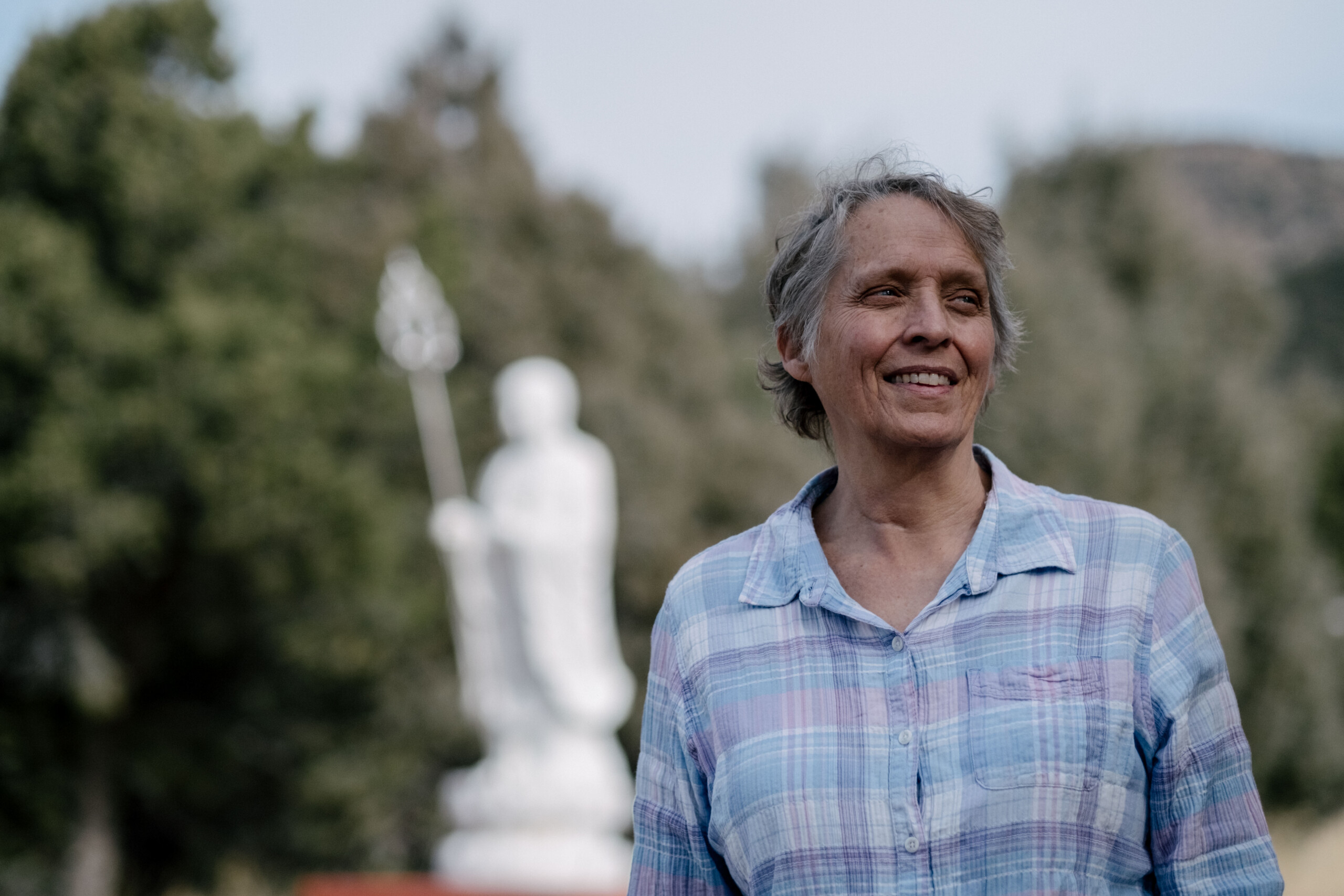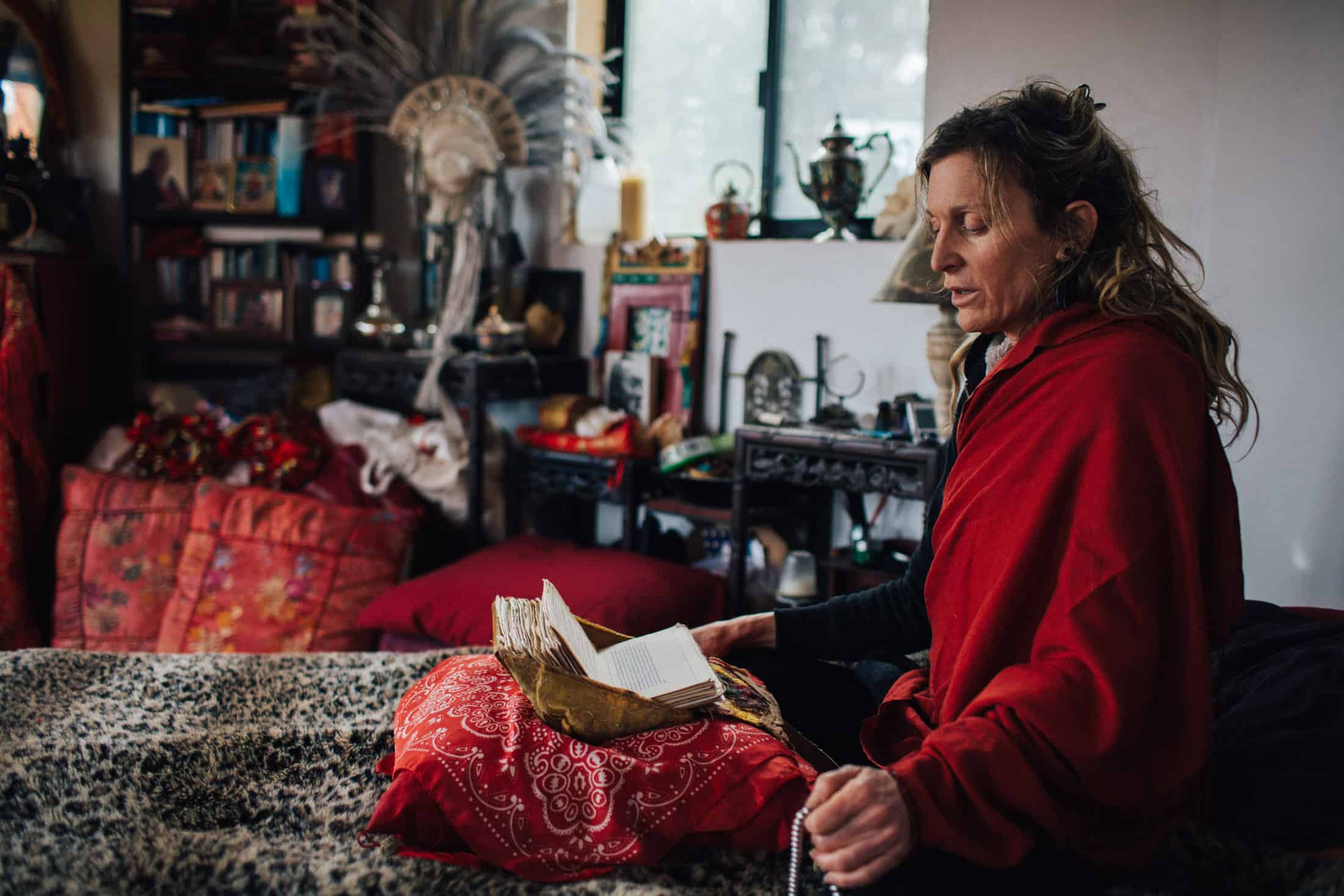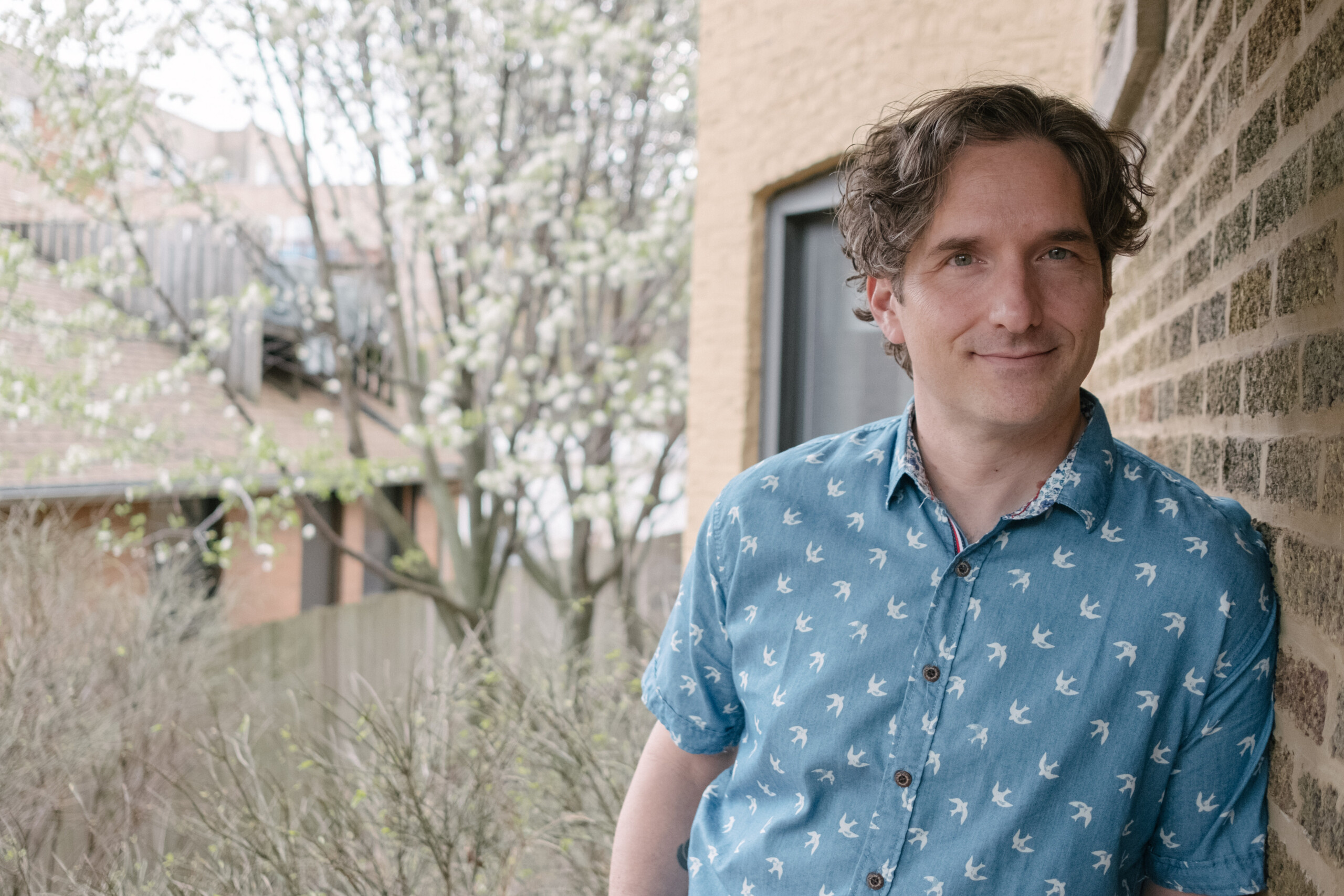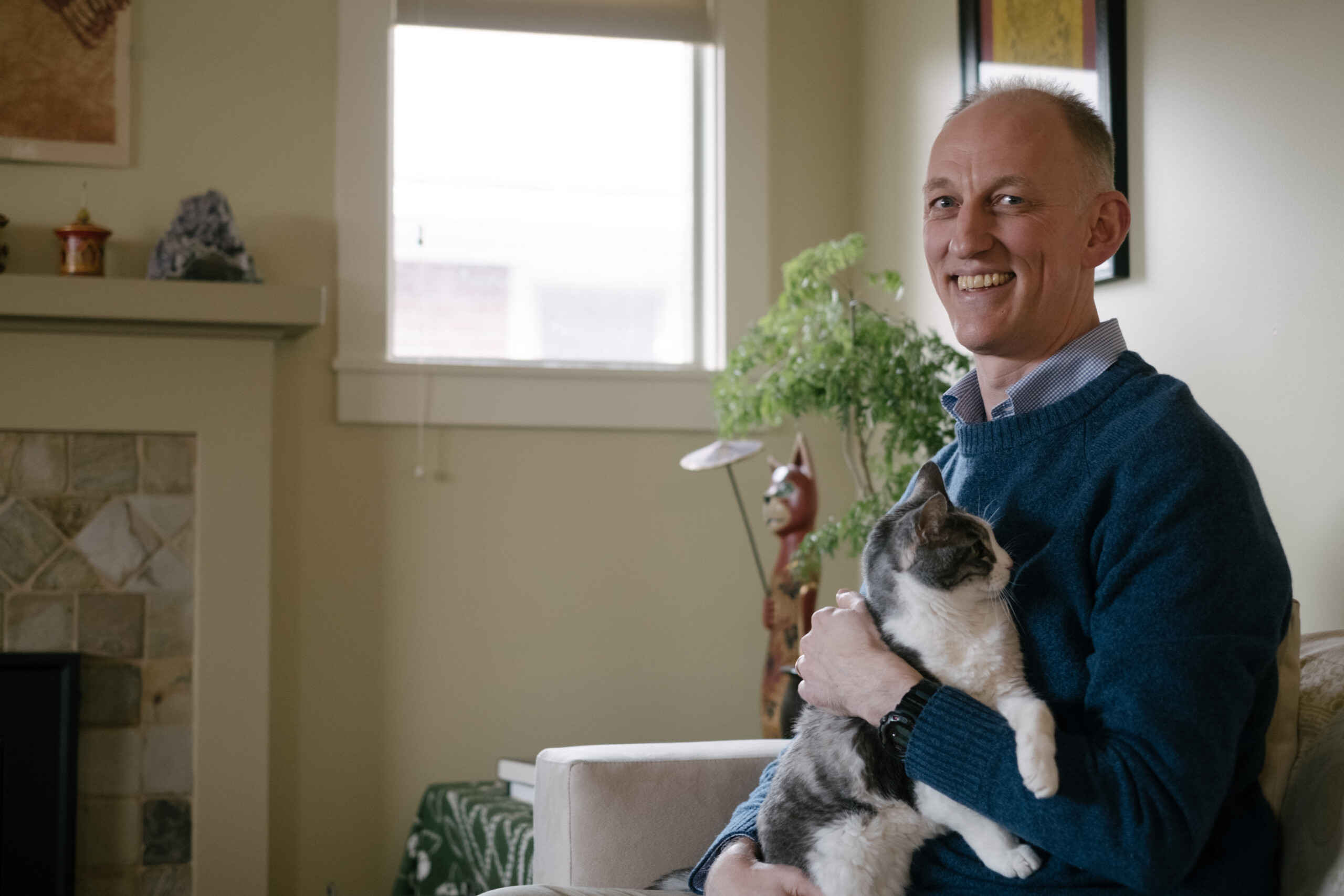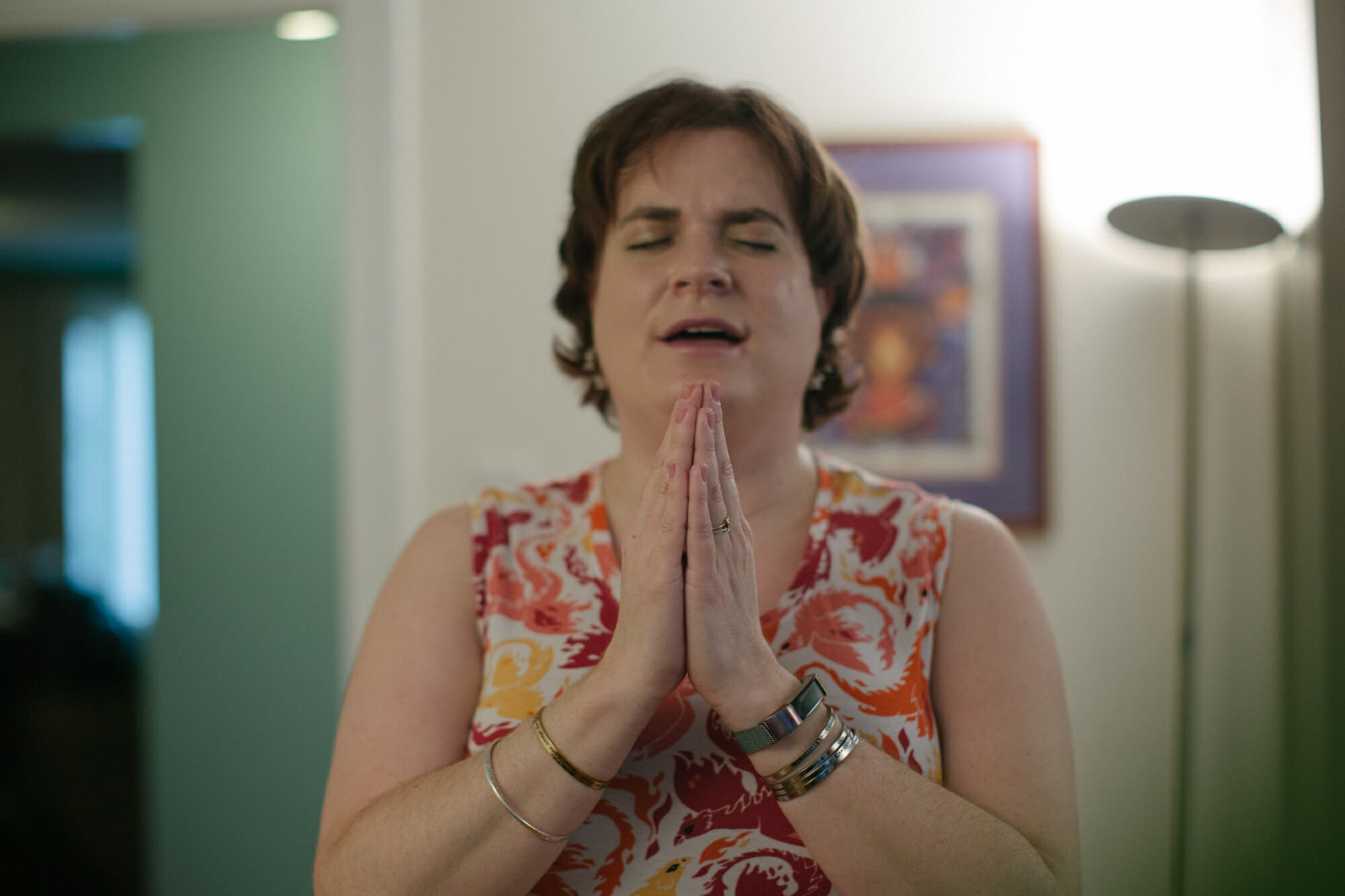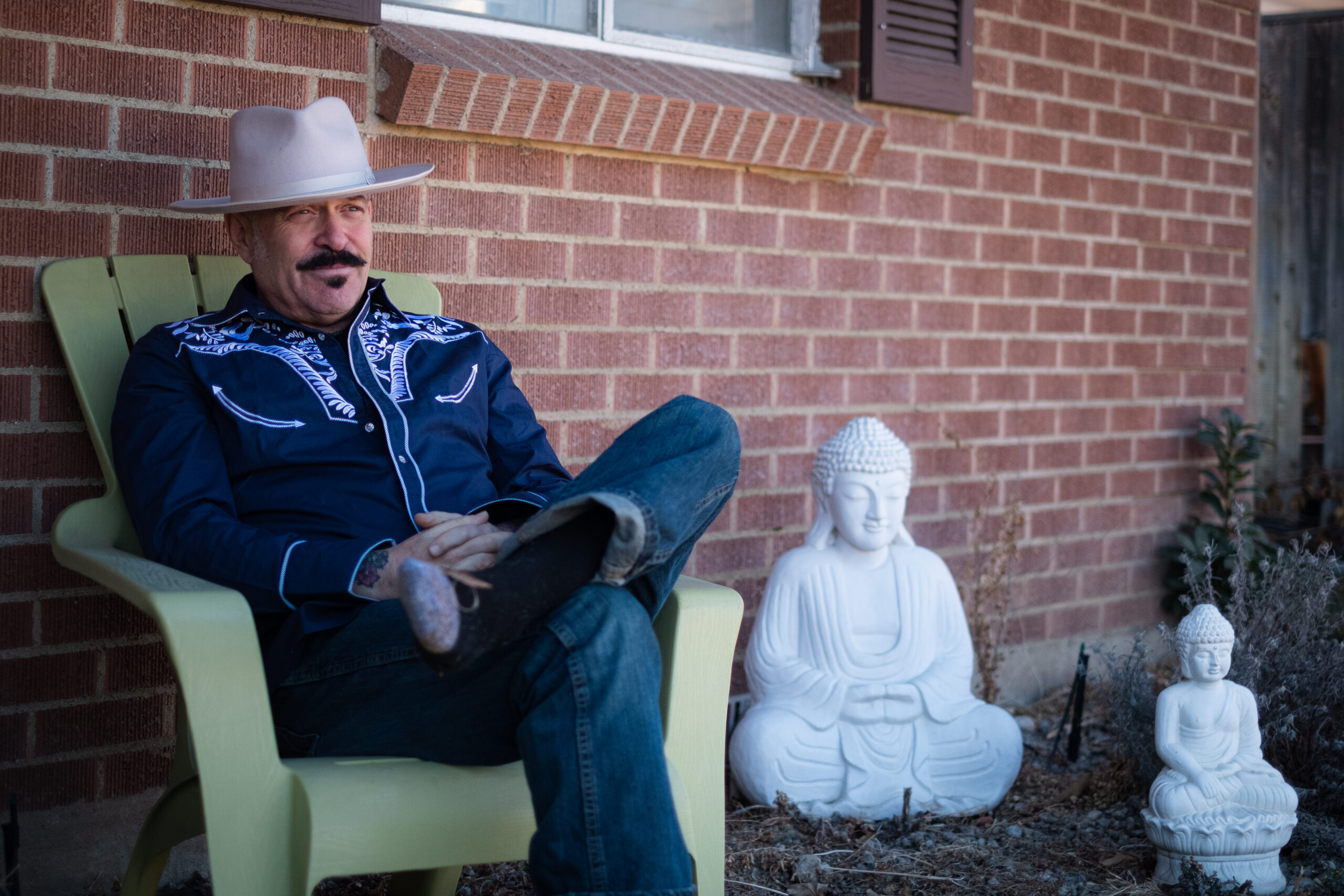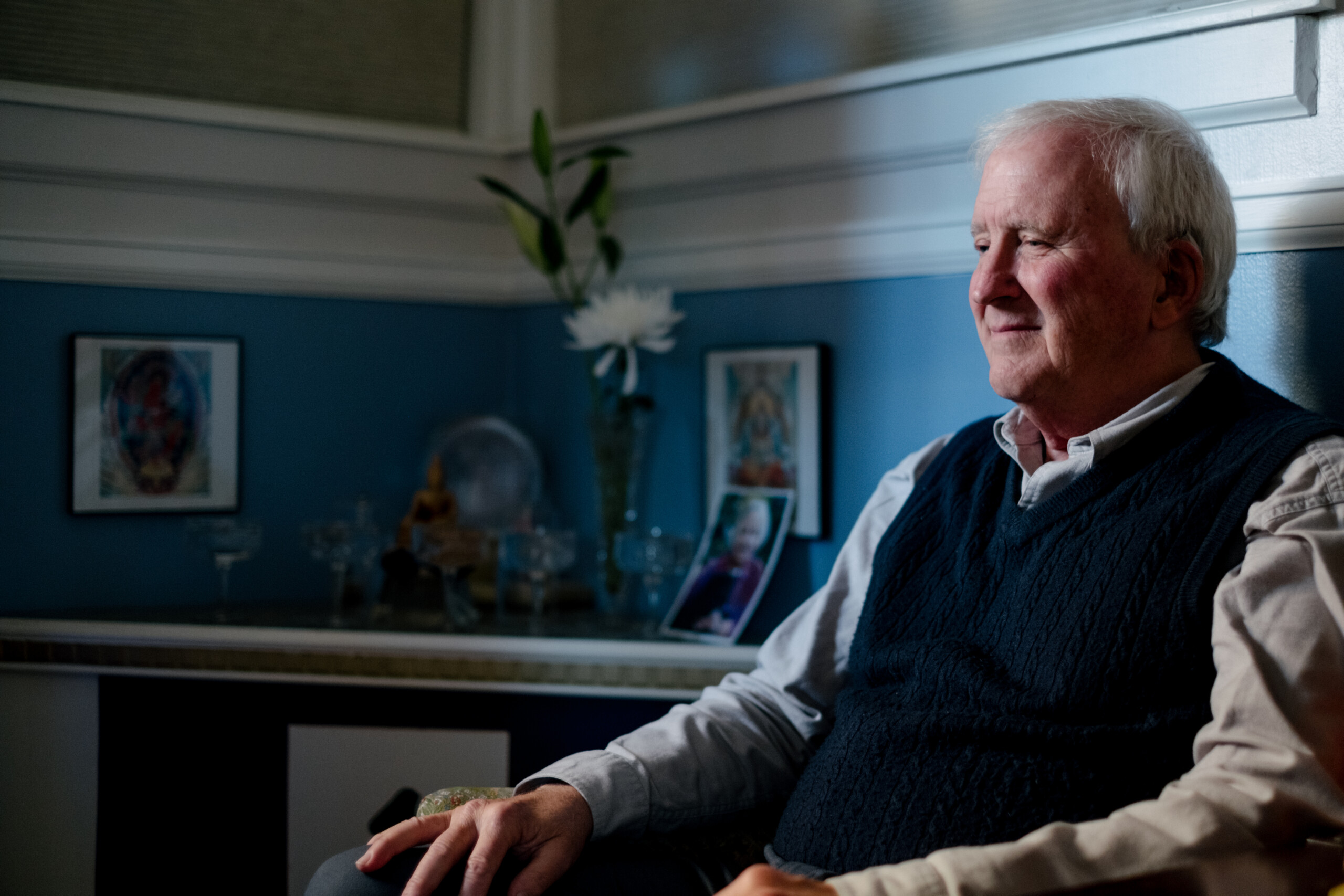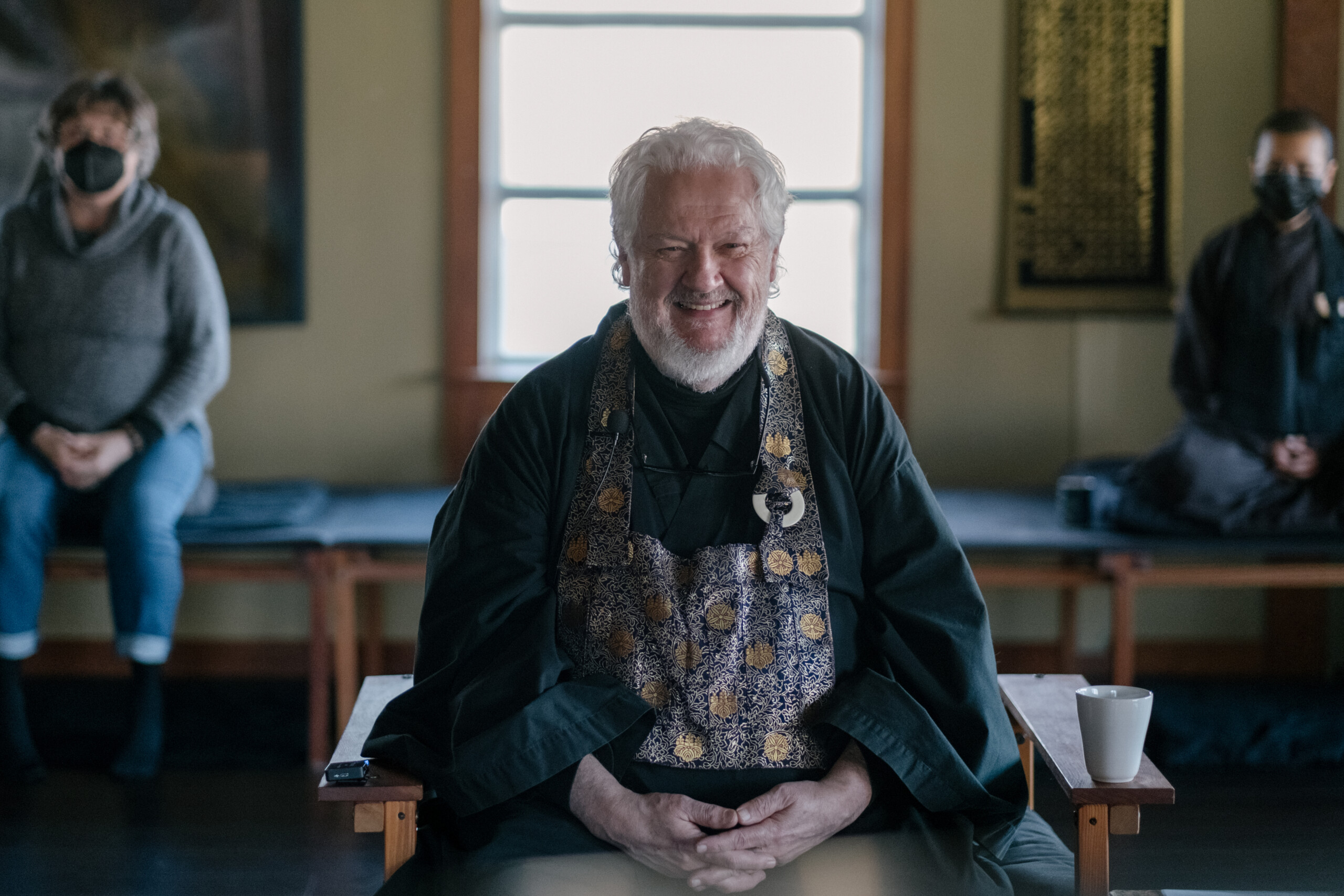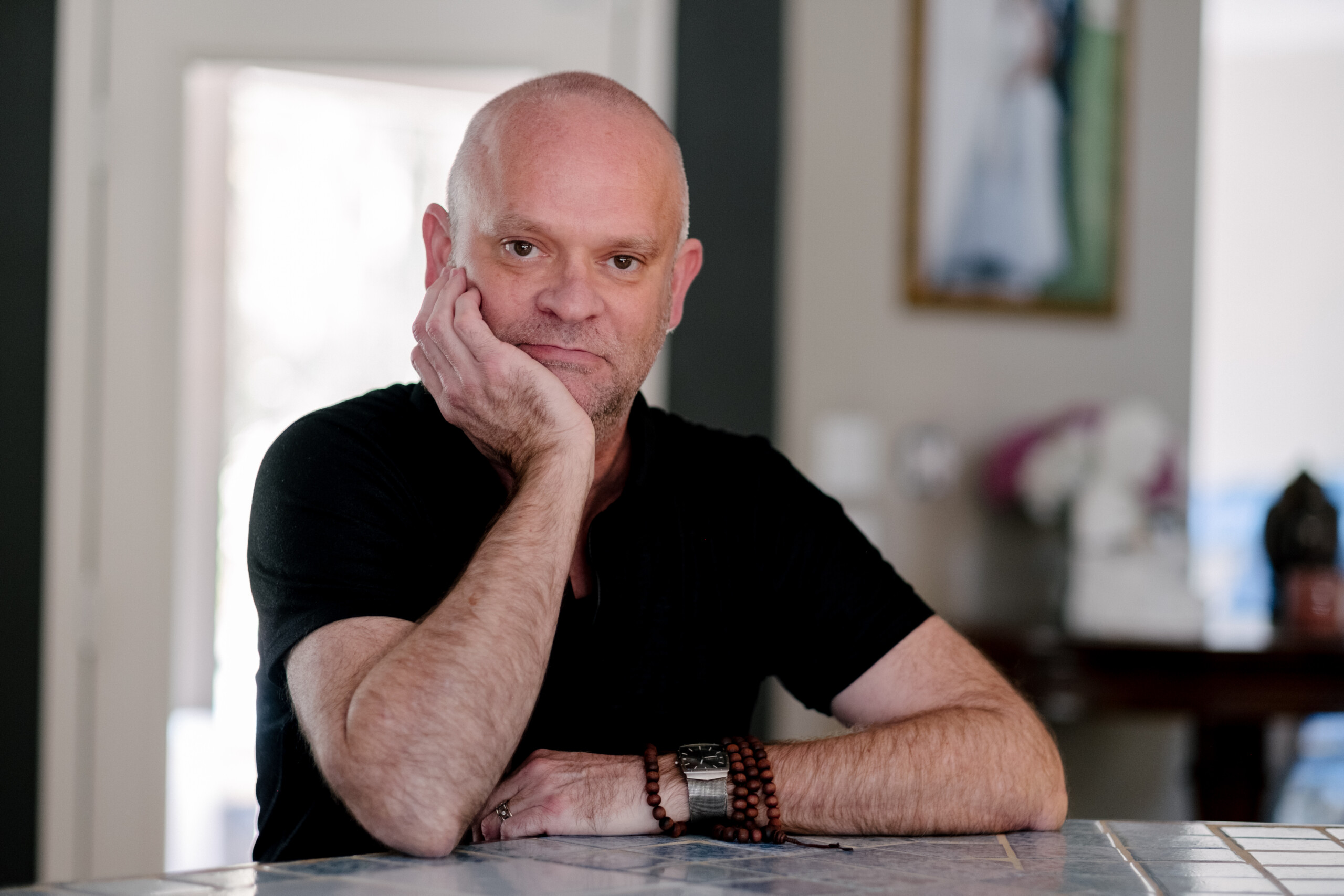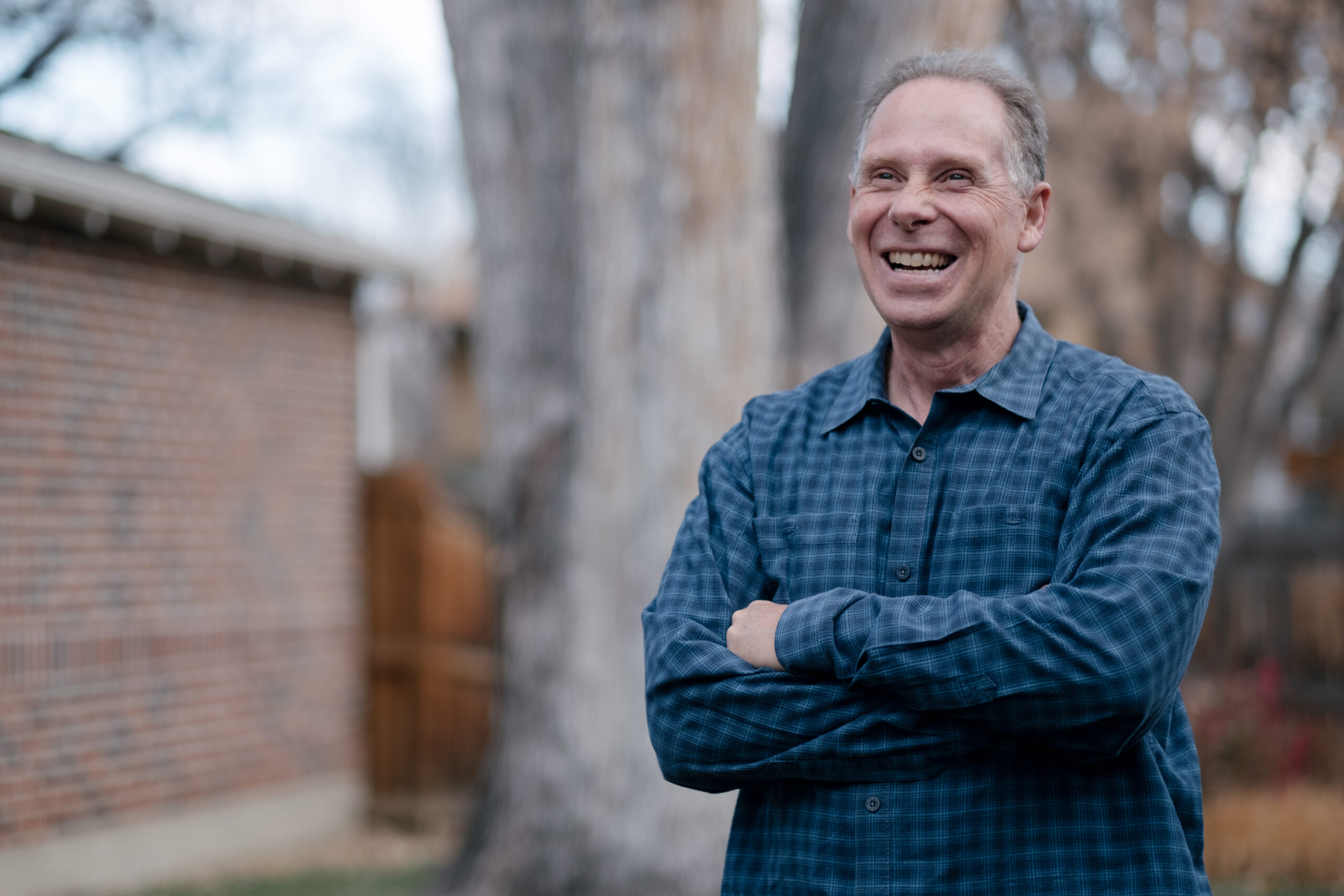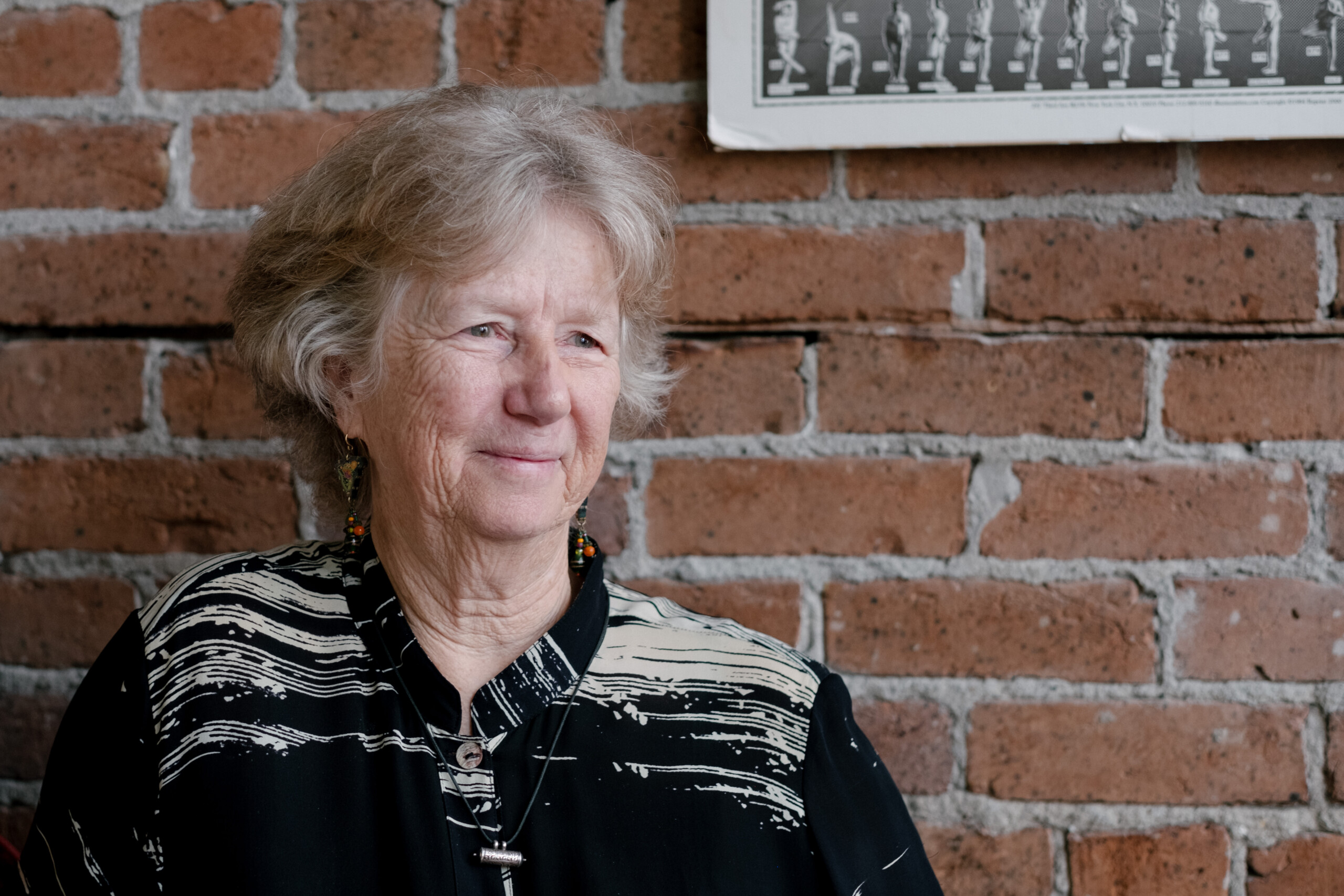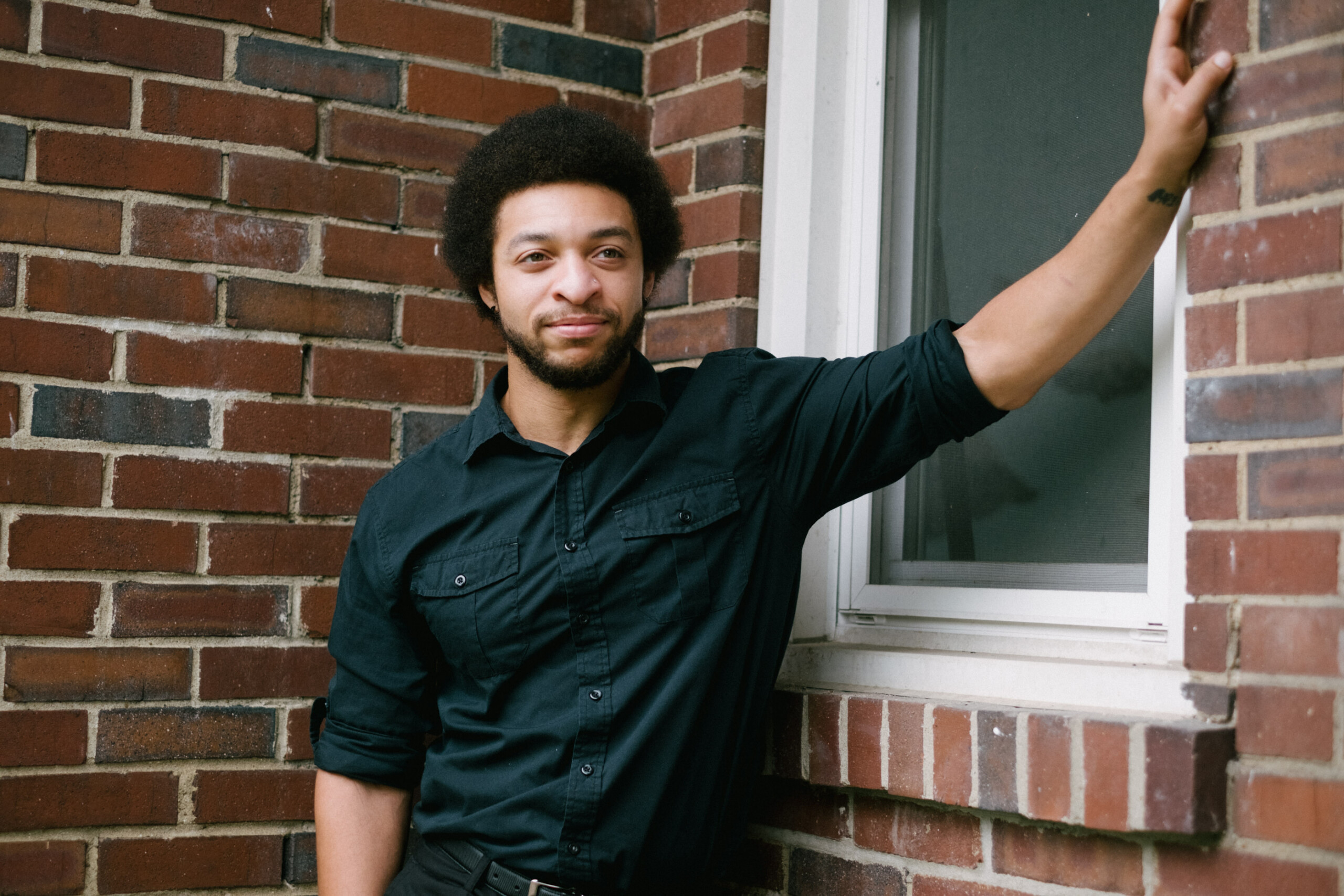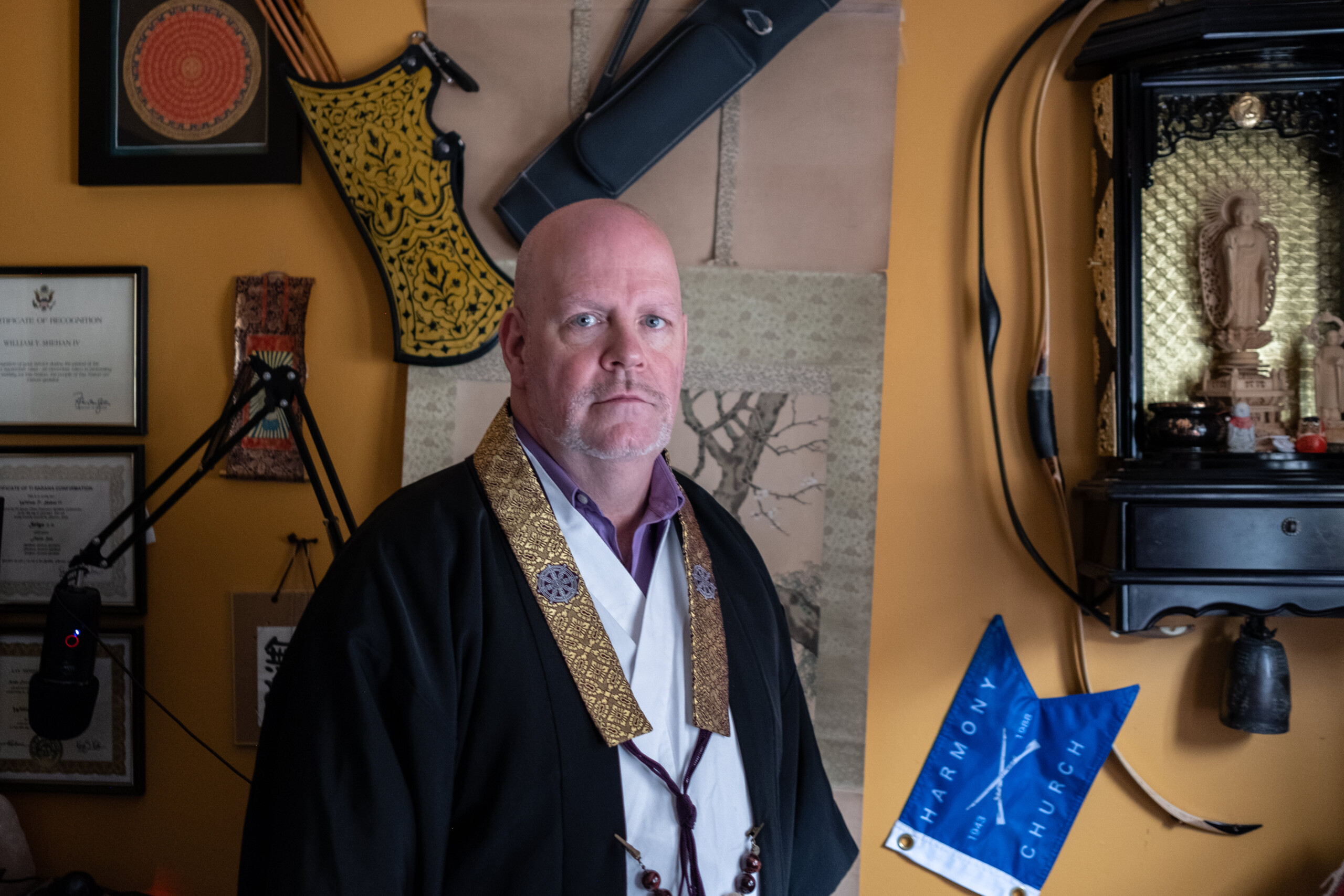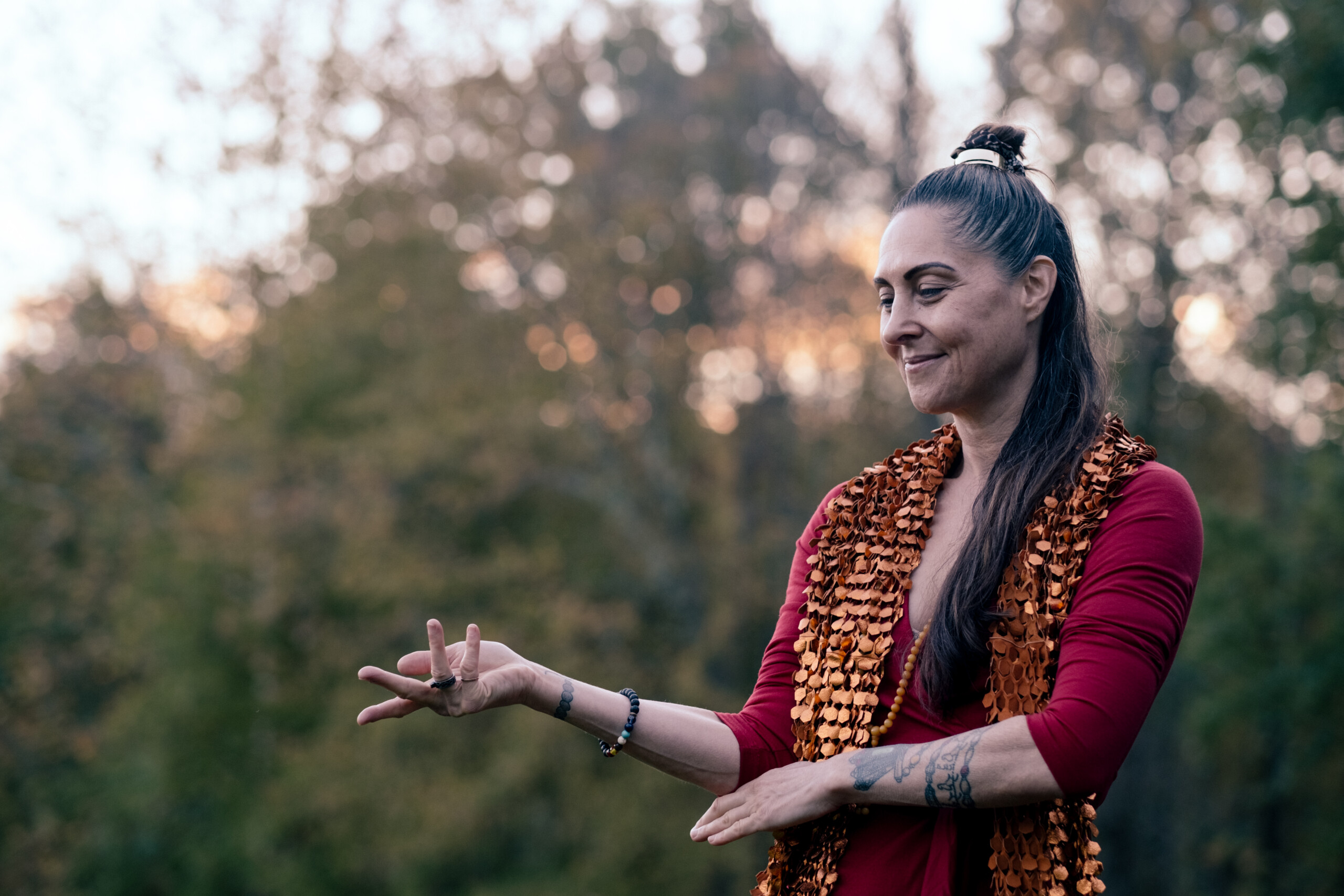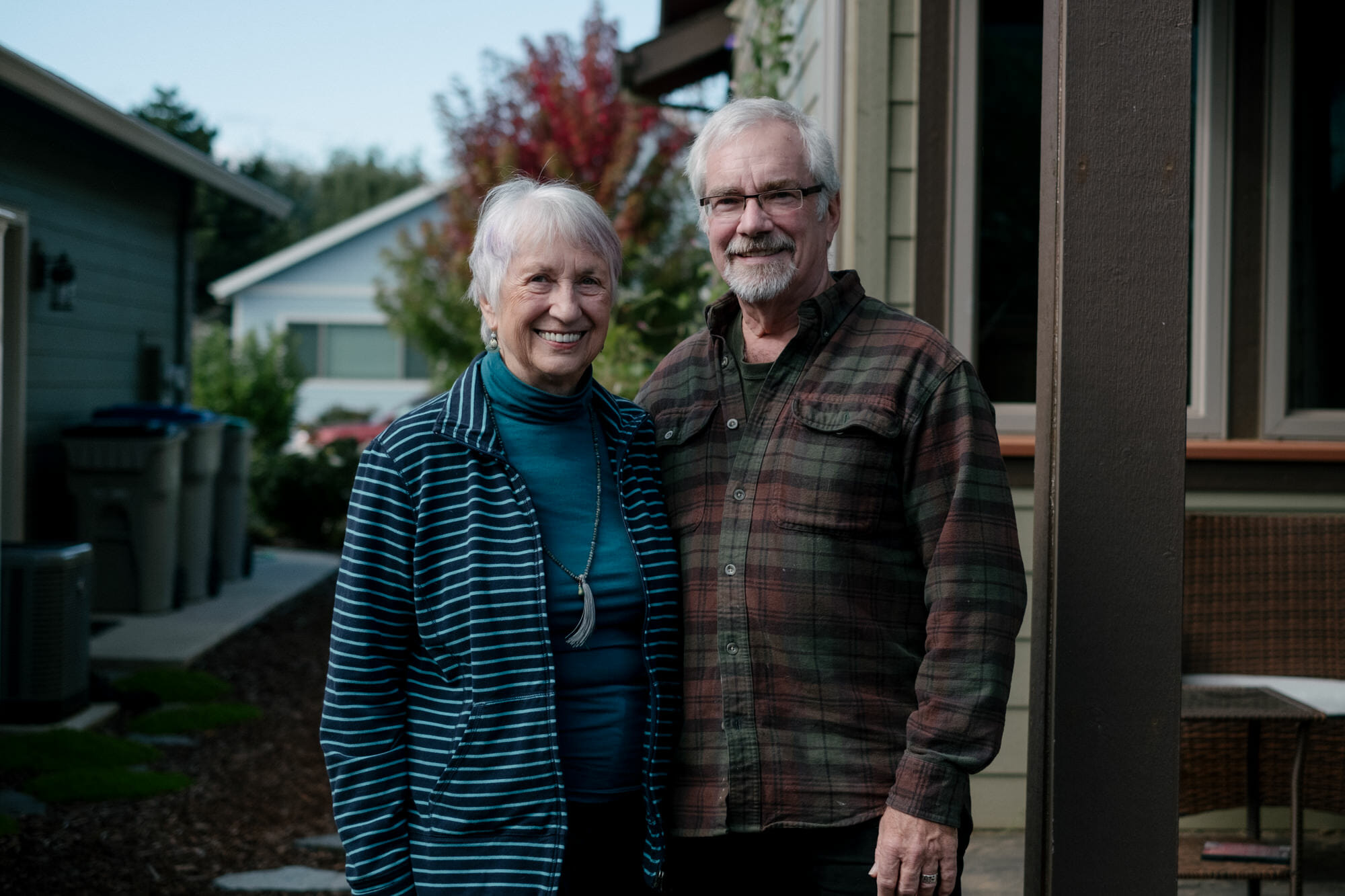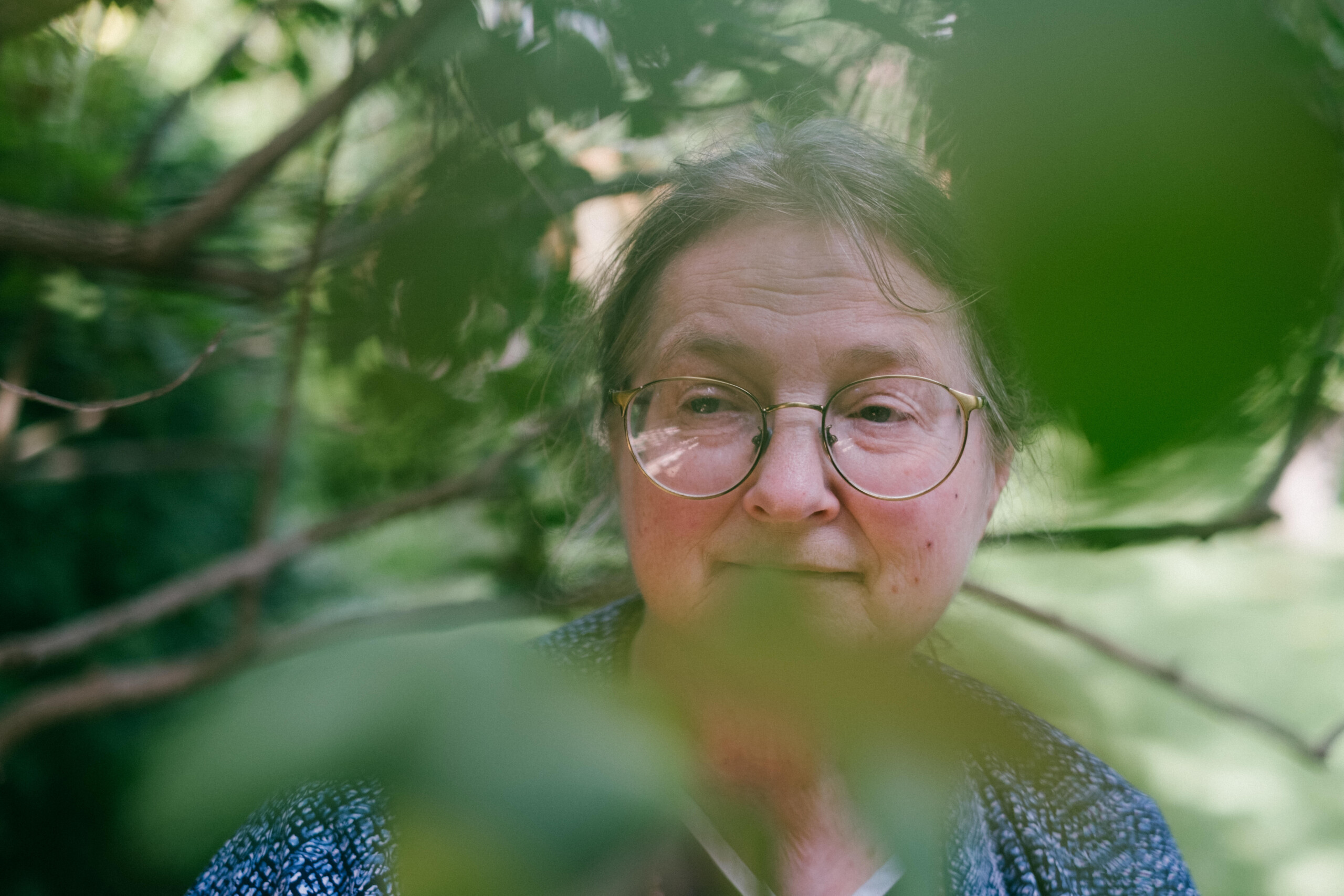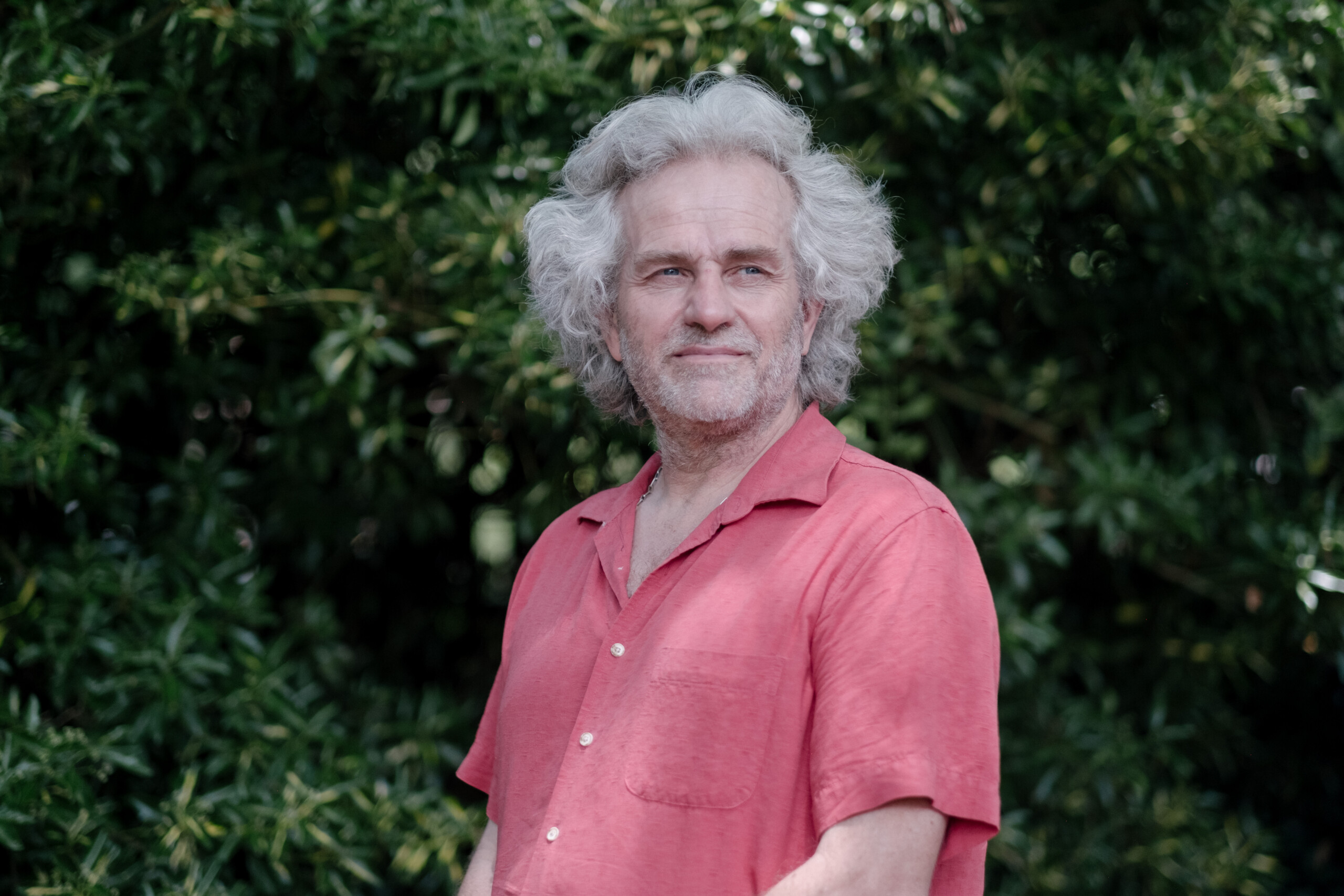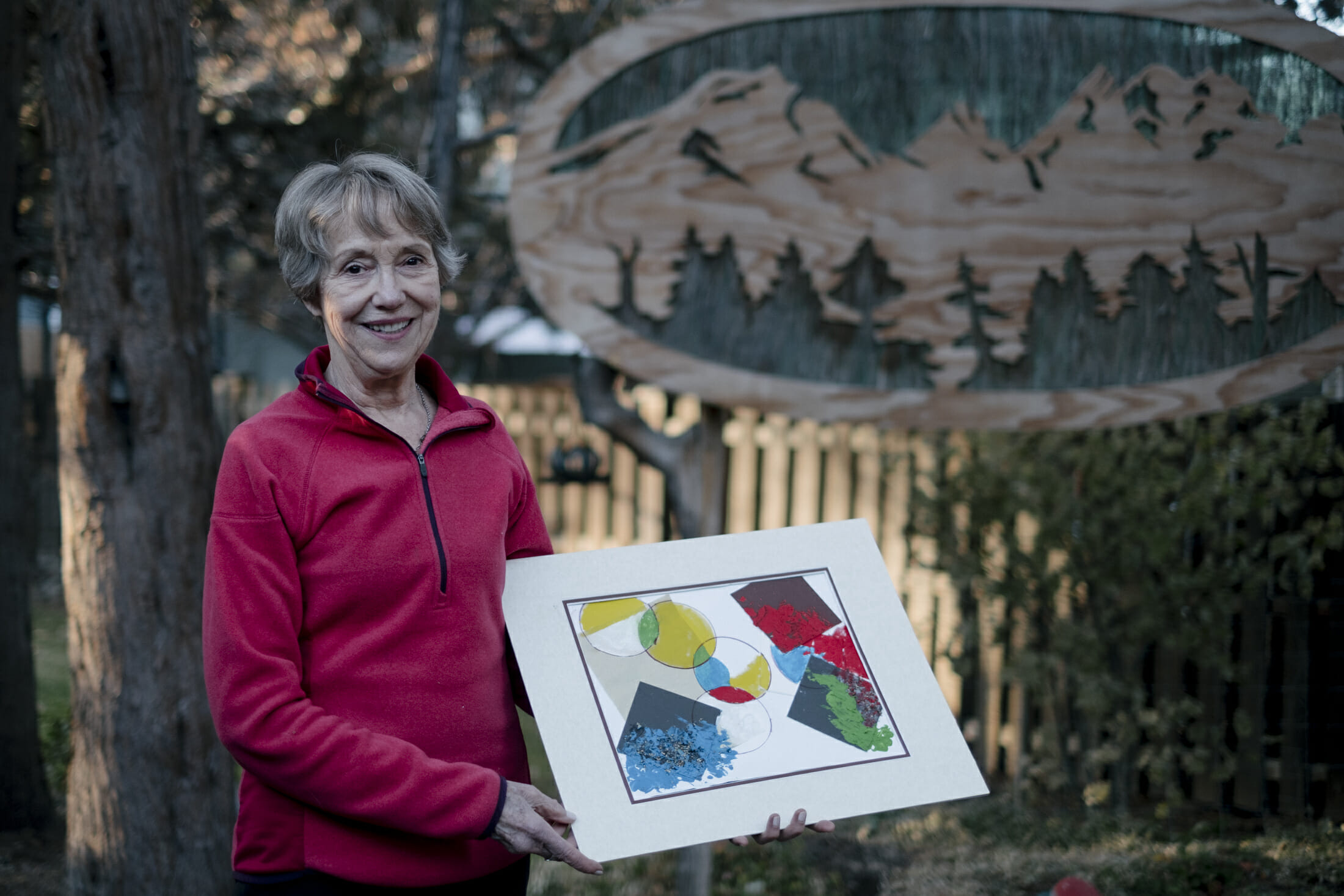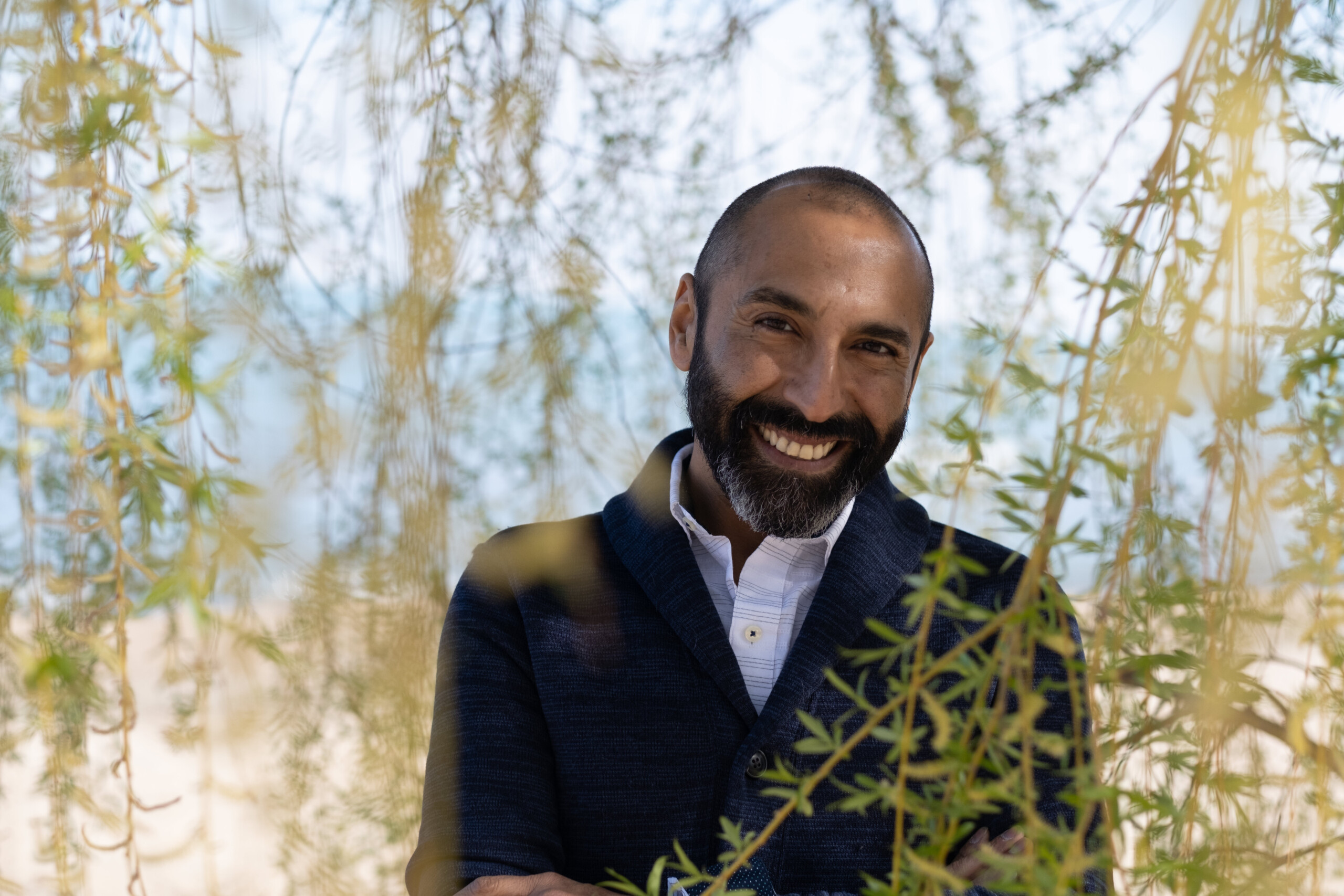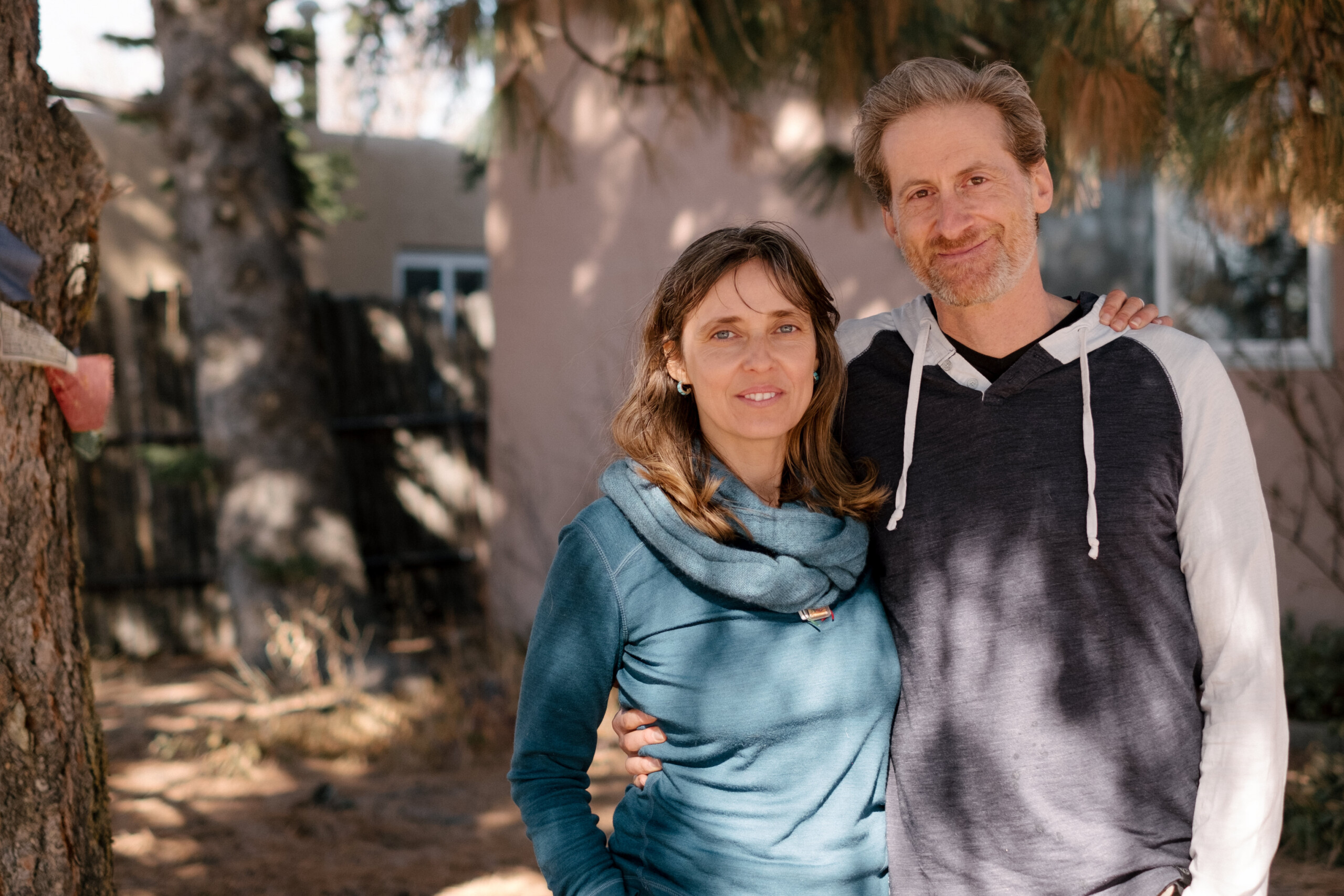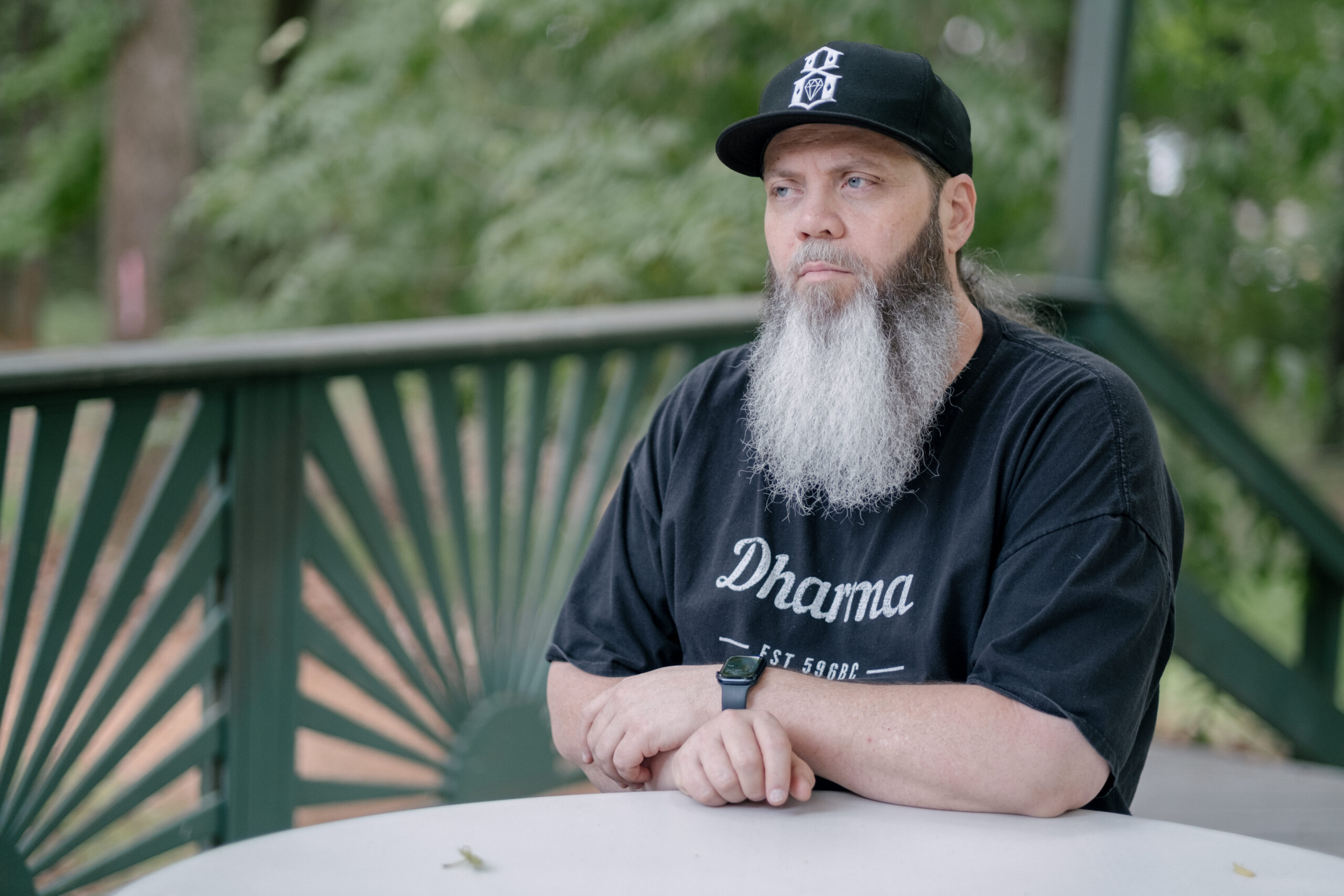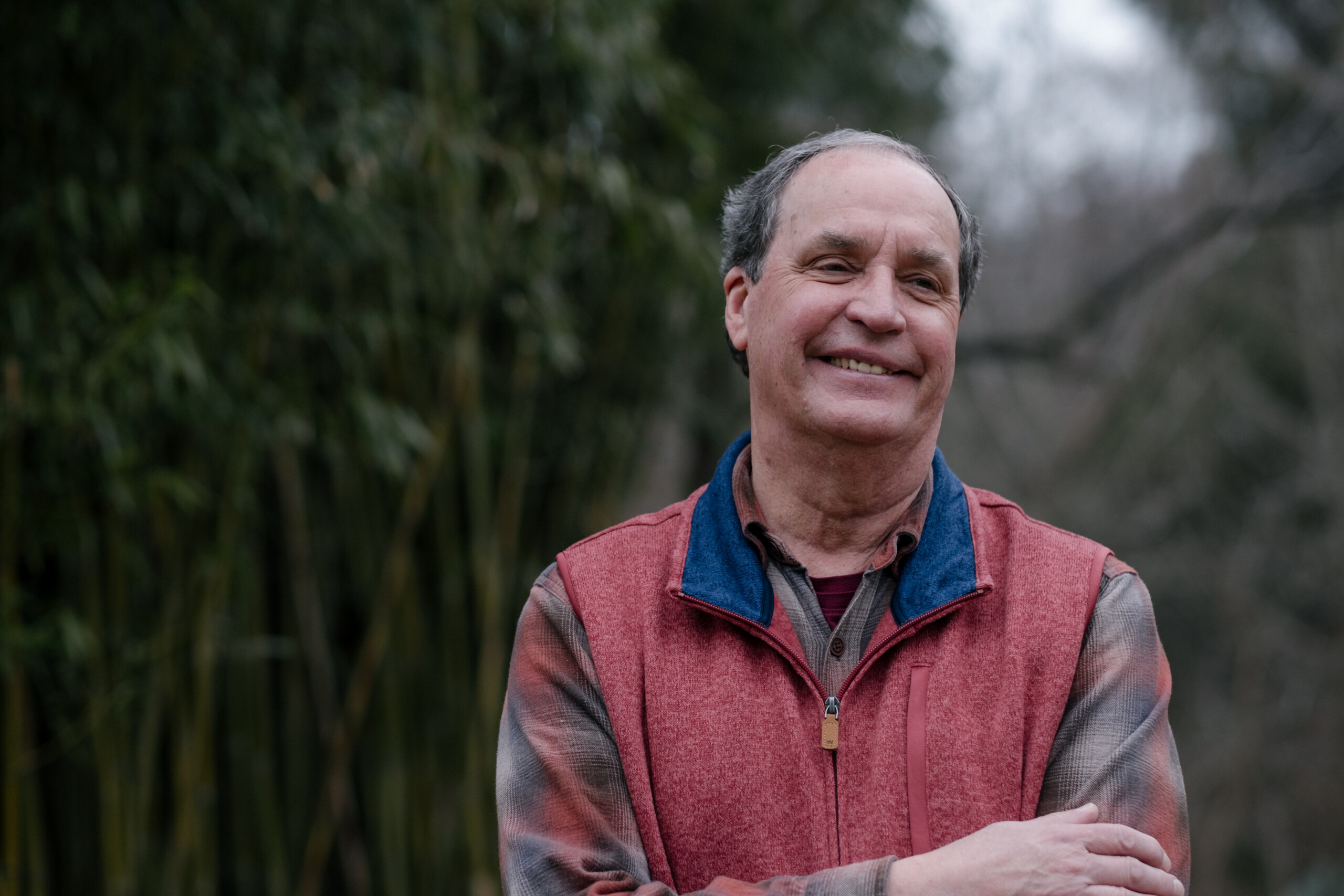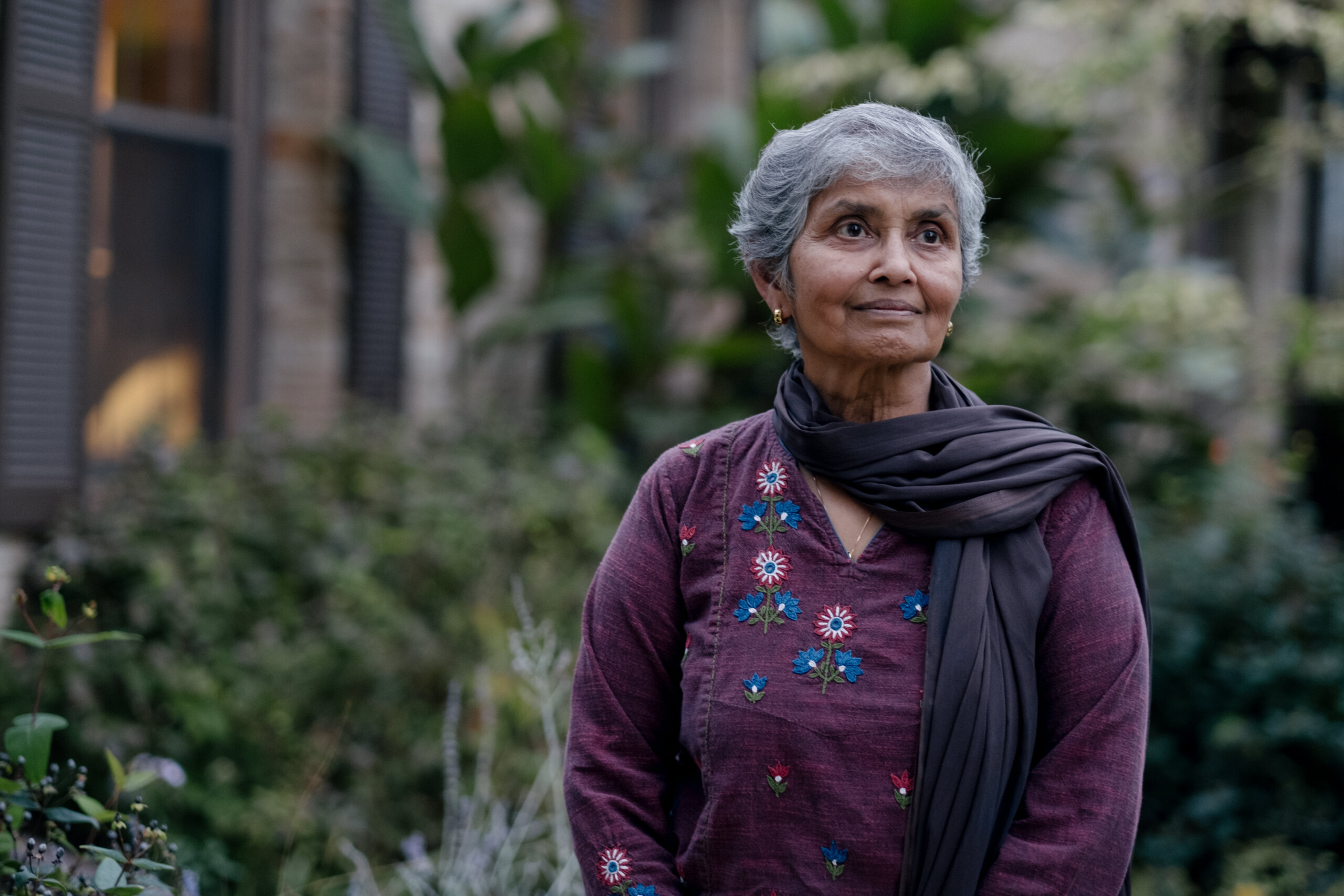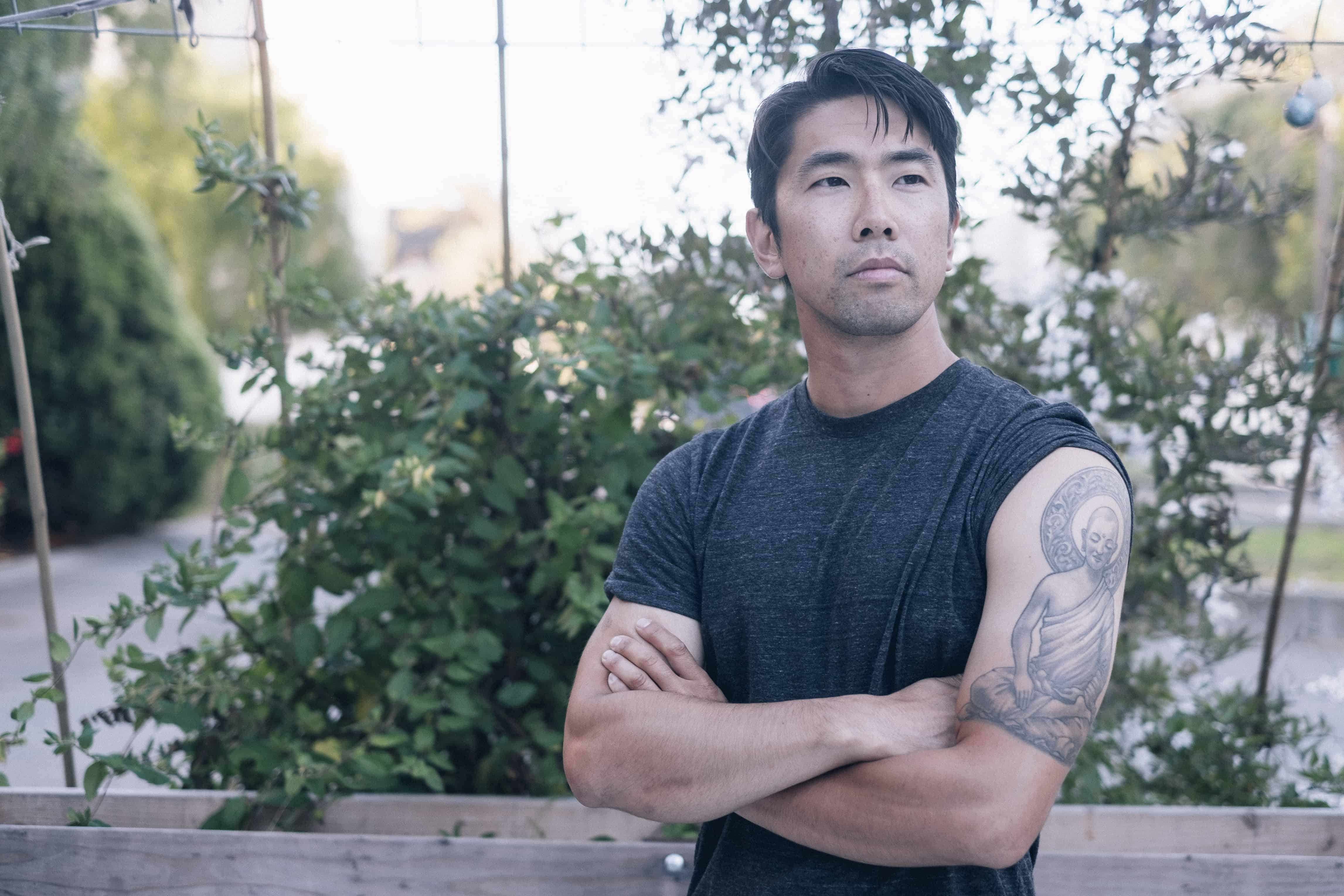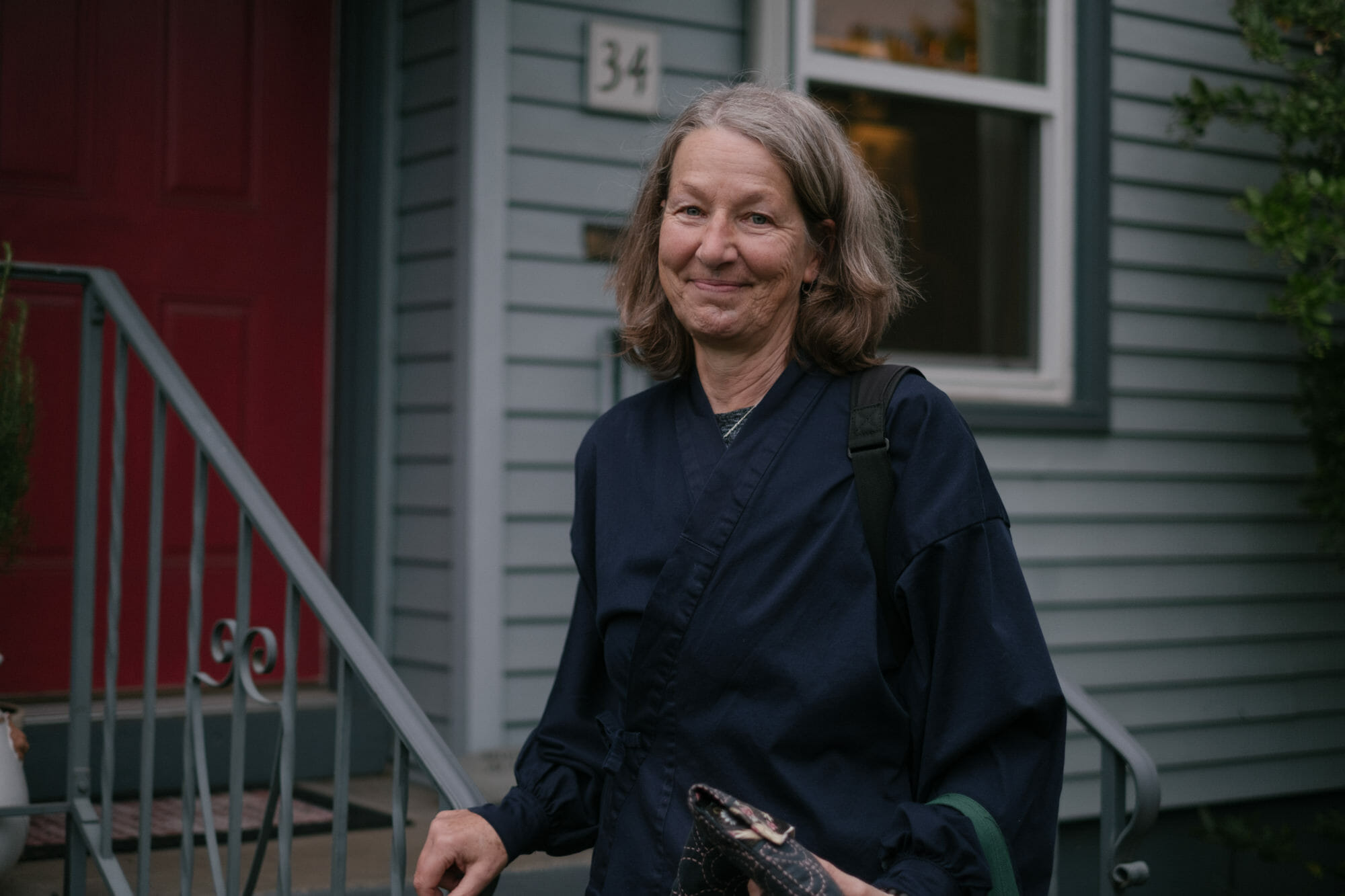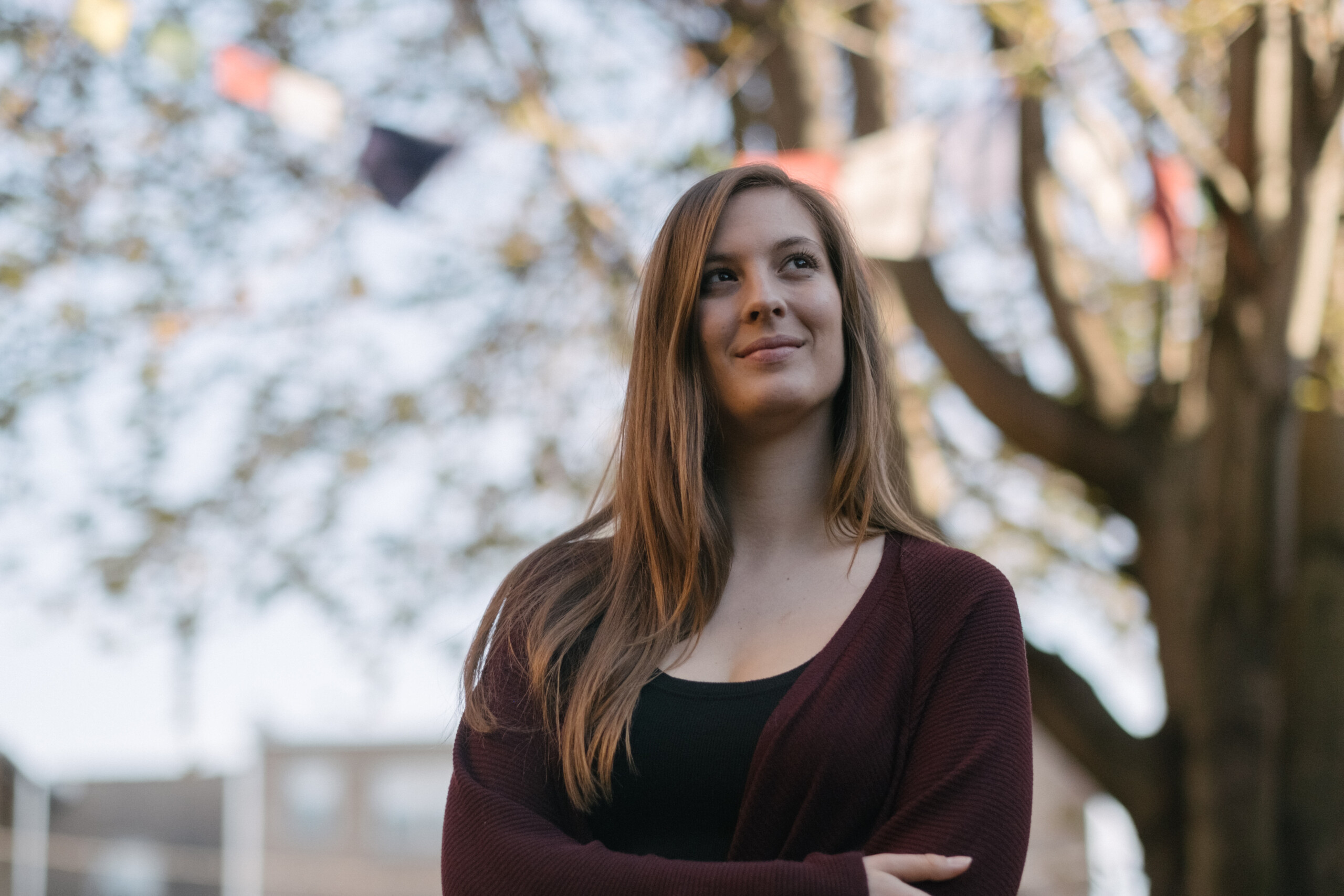When were you first exposed to dharma?
I walked into Against the Stream Nashville Meditation Center in January 2012, shortly after coming out of rehab for alcohol dependence. It was suggested that meditation could be helpful in further recovery. I remember in one of the first talks Dave Smith mentioned that, sitting was just sitting. Whether you were in traffic, the motor vehicle department or sitting comfortably on your own couch that the experience of sitting was all the same. He said, it was only my reaction to it that was sitting that created the flavor of my experience. He then explained the Buddhist concept of the second arrow. I had never contemplated anything like this before. I was utterly superglued to my own emotional reactions without the tiniest room for witnessing what was happening and therefore had limited choices in my response. Added to that, I was a stimulus augmenter. If my experience was good, I reveled publicly in full out exaggeration. If it was an uncomfortable situation, I added layers to the existing story including villains who acted out personally toward me. These stories were also embellished for wider consumption. I thought I was an interesting, expressive “character” speaking deep truth to all. I had no idea I was creating suffering. When Dave explained that simple concept, I was able to separate myself from my own perception of reality for a moment. That moment, that brief second of separation, from the theater of my thoughts, had me fully hooked.
How has the path manifest in your daily experience? Does it reflect in your work and relationships?
The growing space of awareness and softening from practice affects every relationship in my life. The easiest to put into words in my experience around the heart practices. When I first encountered Metta Practice, what roared up was an initial, fierce resistance. If anyone had asked me if I wished well for others, before this practice, I would have confidently, and indignantly, bellowed,” Of course!” This push back response to the phrases helped me see that I felt a deep separation from others due to a deep seeded program of scarcity mind. This relationship was stable across most of the relationships that surrounded me, except for perhaps, my children. “If you did well, if you were happy, there was a less chance I would be” was the silent echo in my survival brain, This is not what I believed about myself, but my body’s resistance revealed my truth. As I result, I became a wandering Metta practitioner. I went to malls, parks, I sat on benches all around town and began the practice of inclining my mind towards good will for others. I watched what prejudices arose from my conditioned mind while simultaneously experiencing physical sensations of the softening of my resistance and the opening of my heart. These continued practices of the heart, metta, karuna, mudita, upekkha have revolutionarily changed my relationship to my loved ones, strangers, those “difficult” people, to earth and it’s creatures and even to bugs. I occasionally now drive UBER as a roving heart practice. It allows me to practice mindful listening to wider groups of people from all different walks of life I would never have had contact with before. It is one of my antidotes to all this “othering” so pervasive in our nation right now. This has been a heart opening, sometimes, deeply touching and often riotous experience allowing me remember just how deeply we can connect to others.
Who is your teacher(s)?
My first teacher was Dave Smith at Against the Stream Nashville and now, is Andrew Chapman at the same center, renamed – Wild Heart Meditation Center Nashville. After a recent tragedy, I realized how important it is to have a practice/ and a mentor. When I was mired thick in grief, Wild Heart Meditation Center became the location of my first steps of healing. I was struggling to find an openhearted grief group and when unable to, I asked the center if I could start one in our community. Looking back now, I am amazed at how much Andrew trusted me to start and facilitate a grief group when I was still so raw. His trust in me and my practice and the connection to others who were grieving were the turning point in my healing. I realize that my practice was in a way returned to me by my teacher Andrew. The way he welcomed me back reminds me of how he speaks of returning to the breath. It is a gentle, trustful, welcoming back.
Which sangha do you normally attend?
What is your primarily profession?
I am a Social Worker as well as stock trader and a Martial Arts and Pilates Instructor. Last month I debuted a new program Recovery Martial Arts. In addition, I facilitate groups at Wild Heart Meditation Center. My established Buddhist practice gave me a path out of the incapacitating grief after my 26 year old son chose suicide in 2017. My other traditional supports did not calm or catch me. The AA mantra of “trust god” , the platitudes from retreating,frightened friends, “he’s no longer suffering” infuriated me. I felt that black of separateness descending back around me again, but at a depth and velocity I could not comprehend. The starkness of that alone feeling in my grief, except for some calm at Wild Heart or when I was with my dharma friends. They allowed my suffering and didn’t flinch when I lamented.
It was the parable of the mustard seed that began to capture my attention. As my mind steadied a little, that powerful parable began to circulate in my mind. The Buddha taught about a distraught mother who could not let go of her dead son. She went from person to person to find the medicine to bring her son back to life. I understood that wandering as I spent hours and hours walking in grief a day. I was unable to sit, and I was unable to go anywhere where people were. It was suggested she see the Buddha for the special medicine for her dead baby. The buddha told her to bring him some mustard seeds from a house that had not experienced death for him to resuscitate her child. The woman wandered from house to house, hearing again and again, that more people had died in those homes that lived there now. I imagine she began to understand the impermanence of life, and from the eyes of those talking about those who had also lost, she began to reconnect to others and deeply know the truth. At the end of the parable she is able to bury her son and step into the Dharma.
This parable was directly responsible for me starting a grief group at Wild Heart. I remember speaking of the pain of losing my son and the woman next to me who had also lost a son, leaned in with the softest eyes. She knew exactly what I felt, and I began to heal. I am now working to bring a Survivors of Suicide Loss group and Response team to Nashville to widen out that connected healing opportunity for others who may be in the same cracked open, wandering condition I was in. That wish for healing and compassion to reach further and further out is a manifestation of the radical imagining contained in the heart practice so vibrant in my heart.
The Dharma informed me, my practice enlivened me and my sangha held me.
And I continue.
Background
Mara, having emerged from alcohol rehab in 2012, found herself on a transformative journey towards Darva. Advised to incorporate meditation into her recovery, she stumbled upon Against the Stream Nashville three months sober. Initially, her ability to sit and meditate was severely limited, given the awakening of her neurological system after years of alcohol and drug use. However, a pivotal moment came during a talk by a teacher at the center that drew her into the world of Dharma.
The teacher spoke of the equality of sitting in various settings, emphasizing that one’s response to the conditions mattered more than the external environment. The concept of the second arrow was introduced—the idea that personal reactions shape the experience of suffering. Mara began to comprehend that her own resistance and aversion to experiences were the sources of her distress. The Dharma teachings revealed the significance of creating space between one’s experiences and thoughts.
In her glued-to-emotion past, there had been no room for reflection or choice. Against the Stream Meditation became Mara’s refuge, offering her the tools to detach from immediate reactivity and paving the way for a more mindful and intentional engagement with life.
Appeal of the Dharma
Mara passionately reflects on the power of Dharma and its universal appeal. To her, Dharma is not only profound but also remarkably attractive, describing it as the “sexiest thing” that exists. She emphasizes the allure of authenticity, comparing it to the genuine experiences in life, like a mother’s baked ziti or a classical violinist in a great hall. Mara believes that true authenticity, emanating from the soft and loving core of one’s being, creates a palpable shift in the air.
Drawing parallels with the precision and dedication seen in performances like Pink’s, Mara contends that Dharma is the key to attuning individuals to a level of authenticity that allows them to connect with themselves and others. In the midst of potential skepticism, particularly in the Bible Belt where Buddhism may be unfamiliar, Mara shares her personal experience of attending a church with Buddhist-informed priests who incorporate love and kindness meditations. She underscores that Dharma and mindfulness need not be confined to a specific religion but can be embraced as a practice that transcends religious boundaries.
Mara reminds others of the Buddha’s teachings, clarifying that he didn’t claim to be a god but rather a spiritually awakened being. The essence of Dharma, as Mara sees it, lies in the pursuit of decreasing personal suffering, enabling individuals to be fully present in their lives. She believes that this authenticity, whether manifesting as a slight improvement in a content life or a significant reduction in a challenging one, resonates and vibrates with a profound truth.
Deepening
Mara contemplates the intriguing question of the direction her spiritual journey might take and how her meditation practice could deepen. She reflects on unexpected and powerful spiritual experiences during meditation, only later realizing their significance through Dharma talks. The teachings provided insight into the residuals of these experiences, reinforcing Mara’s deep faith in the unfolding path and her absolute willingness to allow it to progress organically.
Maintaining a “don’t know mind” about what to expect, Mara expresses her commitment to continue meditation, study Dharma, and engage with teachings from various traditions. Despite the technological shift from tape recorders to smartphones, Mara remains dedicated to learning from diverse voices across the Dharma world. She emphasizes the importance of staying open, devoted, and aware, anticipating opportunities for service or connection. Mara believes in following the flow of energy, being open to deepening her practice in whichever direction it takes.
Adopting the mantra that the most important thing is remembering the most important thing, Mara underscores the significance of always prioritizing her Dharma practice. She channels her attention, energy, and connection with others, embracing the uncertainty of where this dedication may lead and expressing openness to the continuous deepening of her spiritual journey.
Meditation
Mara recounts her transformative journey into the Dharma, emphasizing the practical aspects of her experience rather than abstract ideals. Working interstate, she sought intellectual and sensory input within the context of the practice. Despite the potential realization through solitary meditation in nature, Mara found immense power in the organized teachings of the Dharma, which significantly informed her practice.
Delving into a more grounded perspective, Mara reveals the gritty nature of her process. She highlights the potency of the first foundation of mindfulness, focusing on breath and body sensations. Though it may seem mundane, Mara describes the profound impact of reconnecting with sensations she had long been disconnected from. She stresses the importance of sitting with and feeling these sensations, exploring boundaries, facing fear, and working with various emotions that arise. These were techniques she hadn’t developed during her struggles with addiction and alcoholism.
Mara shares her cumulative journey of sitting, working, and engaging with others to understand and integrate the Dharma. She attributes her transformation to a willingness to confront and work through feelings, a stark contrast to her previous tendencies of freeze, flight, or change. She underscores the Buddha’s invitation to “Come see for yourself,” highlighting the freedom in not being bound by a rigid belief system. Mara’s power lies in her personal willingness to embrace the practice, to sit with it, and to discover her own truth.
Martial Arts
Mara reflects on the transformative impact of her mindfulness practice on her approach to life, especially in changing her heart’s reaction and way of paying attention. Now, as she considers the next phase of her professional life after decades as a martial artist, she explores how to integrate the teachings and practice of mindfulness to continue serving others, particularly those in recovery from trauma, alcoholism, or grief.
Drawing on her 25-30 years of martial arts experience, Mara recognizes the deep connection between traditional martial arts and the first foundation of mindfulness, focusing on breath and body. She describes the development of a new program for people in recovery, informed by her Dharma practice. Mara emphasizes the importance of breath and movement in the program, using martial arts techniques to help individuals navigate the ups and downs of energy, particularly crucial for those experiencing trauma.
Mara integrates neuroscience findings with Dharma teachings, emphasizing the impact of posture on one’s experience and feelings. She believes that consciously working with the breath and posture can alleviate trauma responses and contribute to recovery. Her dedication to serving those in the most painful stages of recovery stems from her personal experiences and a profound desire to give back.
Excited about the prospect of combining neuroscience and Dharma in her program, Mara looks forward to the culmination of her understanding, hoping it will contribute to the well-being of individuals who share similar struggles to those she faced during her own journey of addiction and recovery.
Other Practices
Mara reflects on her transformative journey and the impact of Dharma on her heart, highlighting the crucial role of heart practices in this process. She acknowledges the significance of Metta, or loving-kindness, along with the practice of compassion (Karuna) in responding to the suffering of others. Mara delves into the nuanced challenge of empathetic joy, the third higher practice, sharing her initial struggles with genuinely wishing well for others and finding joy in their good fortune.
Through Dharma teachings, Mara learned to hold the natural arising of compassion in a healthy space, navigating the delicate balance between genuine empathy and potential codependency. She emphasizes the transformative power of empathetic joy, expressing happiness for others’ good experiences, a practice that initially seemed challenging but evolved as she progressed on her journey.
Mara explores equanimity, describing it as the thumb that holds together the three other heart practices. She sees equanimity as the sense of balance that allows one to be open to the full spectrum of life’s experiences—joys and sorrows, ups and downs. This balanced perspective enables Mara to incorporate all emotions into a settled place, free from the need to control or micromanage based on personal preferences.
In summary, Mara’s heart practices, informed by the Dharma, have played a pivotal role in her transformation, shaping her responses to suffering, joy, and the complexities of human experience. These practices have become an integral part of her spiritual journey, offering a grounded and balanced approach to life.
Personal Adversity
Mara recounts the profound impact of grief on her life, especially the incomprehensible loss of a child. Andrew, a teacher, became a crucial support during her darkest times. Mara shared with him the parable of the mustard seed, which had helped her emerge from the darkness. The parable tells of a mother seeking medicine for her deceased son. The Buddha instructs her to find a mustard seed from a household untouched by death, leading her to confront the shared experience of loss in the community.
Inspired by the parable, Mara recognized the power of Sangha and decided to start a grief group at Wild Heart Meditation Center. Andrew, trusting in Mara’s journey and understanding the depth of her practice, supported the initiative. The group, comprising individuals from different backgrounds and faiths, used the book “Bearing the Unbearable” as a guide to share their experiences. In this diverse and supportive community, Mara found solace and a profound connection with others who had experienced loss.
Through the grief group, Mara discovered the transformative potential of shared suffering and the path to awakening through acknowledging and embracing grief. Looking ahead, a year and a half after her inconsolable loss, Mara expresses a commitment to extending compassion and healing to others. She emphasizes the importance of Sangha in growing and sharing the Dharma, inviting more people to join the group and addressing the often overlooked and unspoken experience of loss in a supportive community.
Teacher
Mara expresses deep gratitude for her teacher, Andrew Chapman, at Wild Heart Meditation Center, recognizing the profound impact he has had on her spiritual journey. Andrew’s openness and genuine reception have allowed Mara to explore different facets of herself and manifest the teachings she has received into their Sangha.
During a challenging period in Mara’s life, Andrew provided unwavering support, sitting with her through the lamentation of her heart without imposing expectations or the need to mask her suffering. Mara values not only the insightful talks and podcasts by Andrew but, more significantly, the lessons she learns from witnessing how he embodies the Dharma in his actions.
Andrew’s softness and trust in the Dharma, especially during Mara’s darkest moments surrounding her son’s tragic decision, became a lifeline. His instinctual trust in Mara’s ability to navigate the worldly winds demonstrated the power of trust in the Dharma. Mara highlights Andrew’s belief and actions as a powerful teaching, showcasing Dharma in action and inspiring her to trust and believe in herself during challenging times.
Relationships
Mara reflects on the profound transformations in her interactions and perspectives resulting from her Dharma practice. She observes a significant change in her ability to listen and be present, especially in her interactions with her daughter, her dog, and even strangers in the dog park or during her occasional Uber driving. This newfound presence allows her to witness the authenticity of others, fostering a sense of connection and understanding.
Mara emphasizes the importance of discernment in deciding whom to invite into her inner circles, recognizing that not everyone needs access to the intimate spaces of her heart. Despite differences in political views and backgrounds, she challenges the notion of “othering” and actively seeks connections with diverse individuals, even choosing to drive for Uber to engage in conversations with people different from herself.
Her experiences as an Uber driver become a revolutionary act, breaking down barriers and finding common ground with people she might not have connected with previously. Mara’s commitment to listening and understanding has allowed her to bridge gaps and connect with others on a deeper level, prompting some passengers to reach out and reconnect after their brief rides.
In essence, Mara’s journey exemplifies the transformative power of presence, awareness, and connection, extending beyond her personal circles to challenge societal divisions and contribute to healing through meaningful interactions with others.

